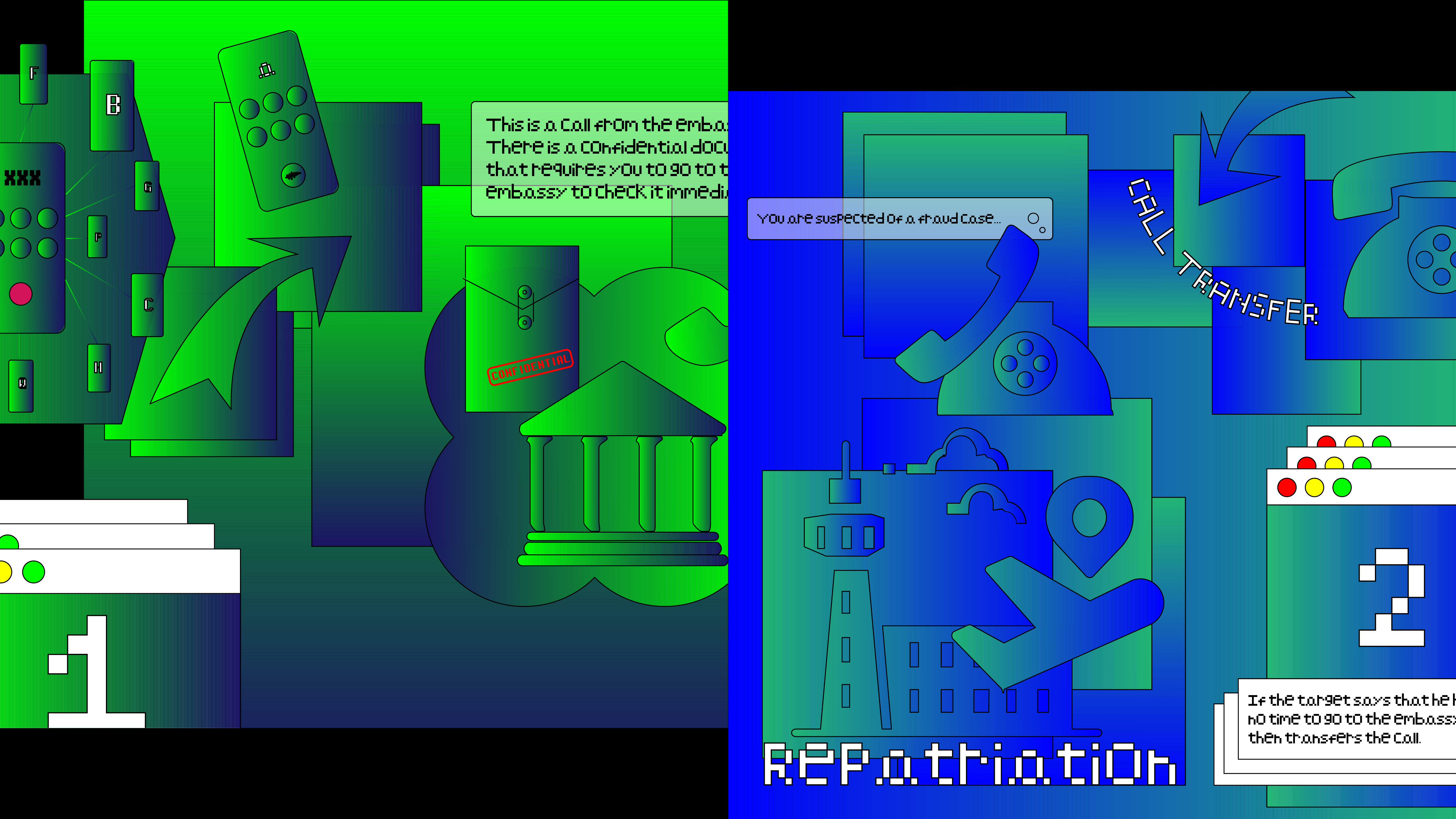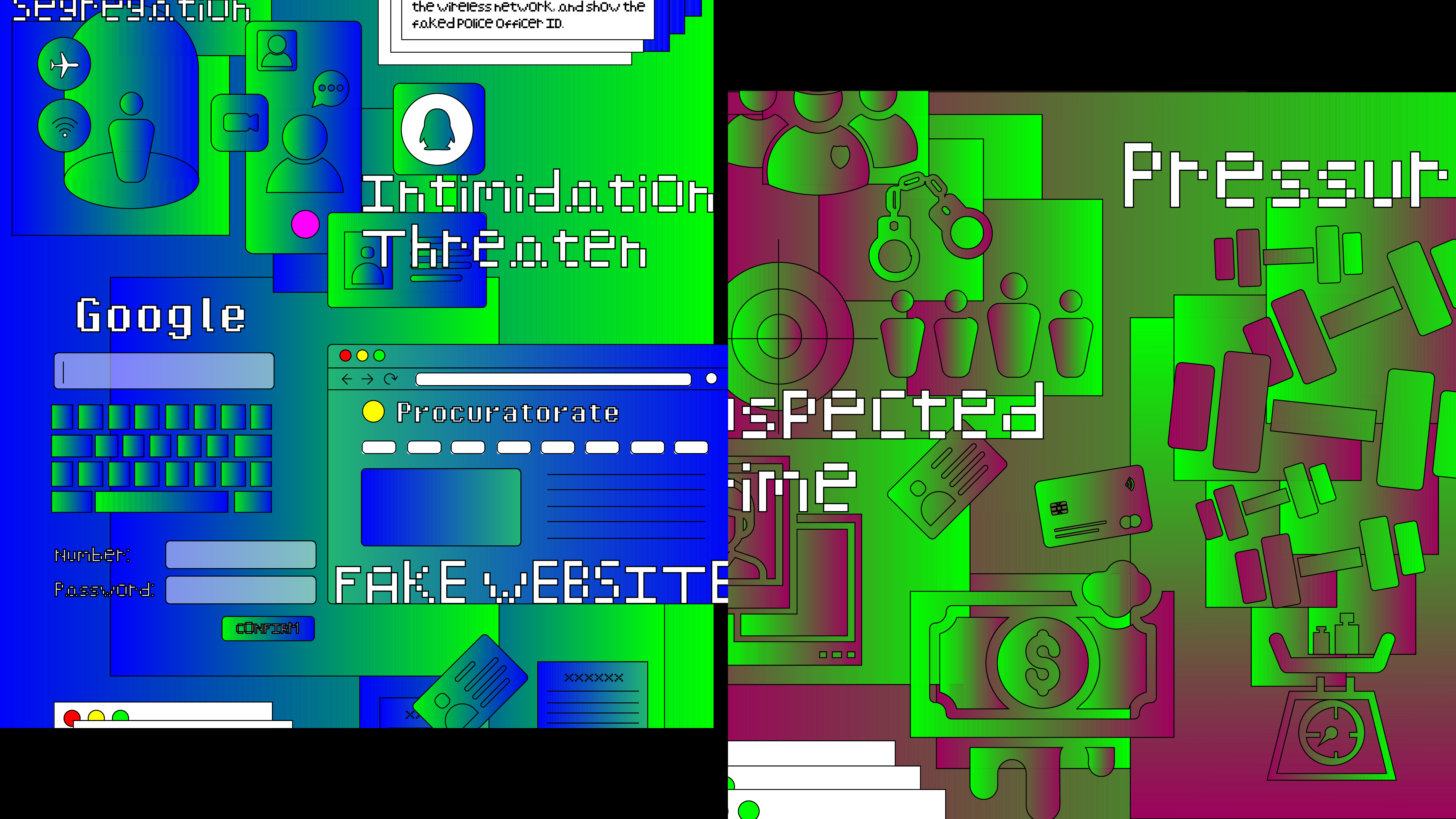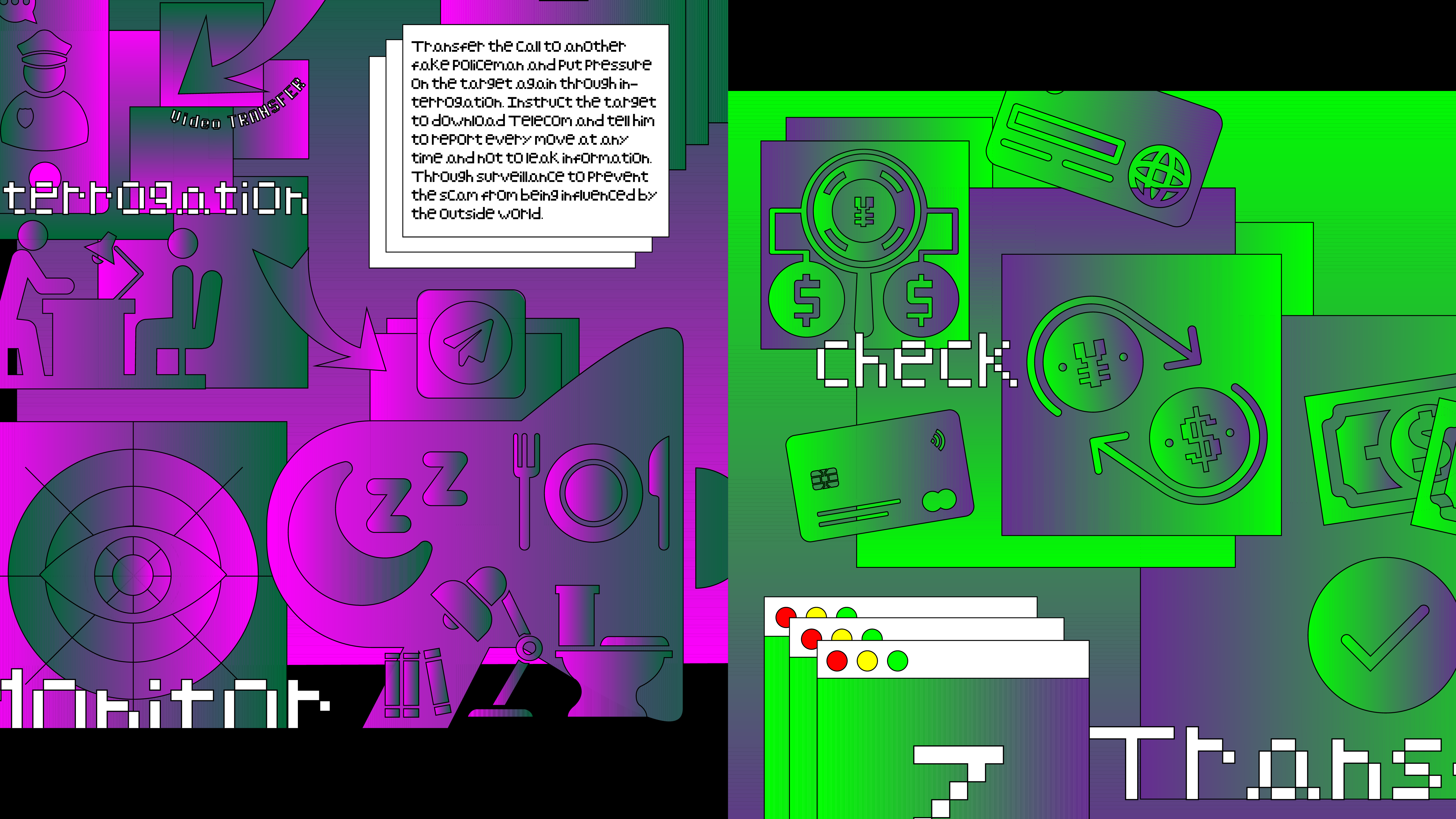Final Project
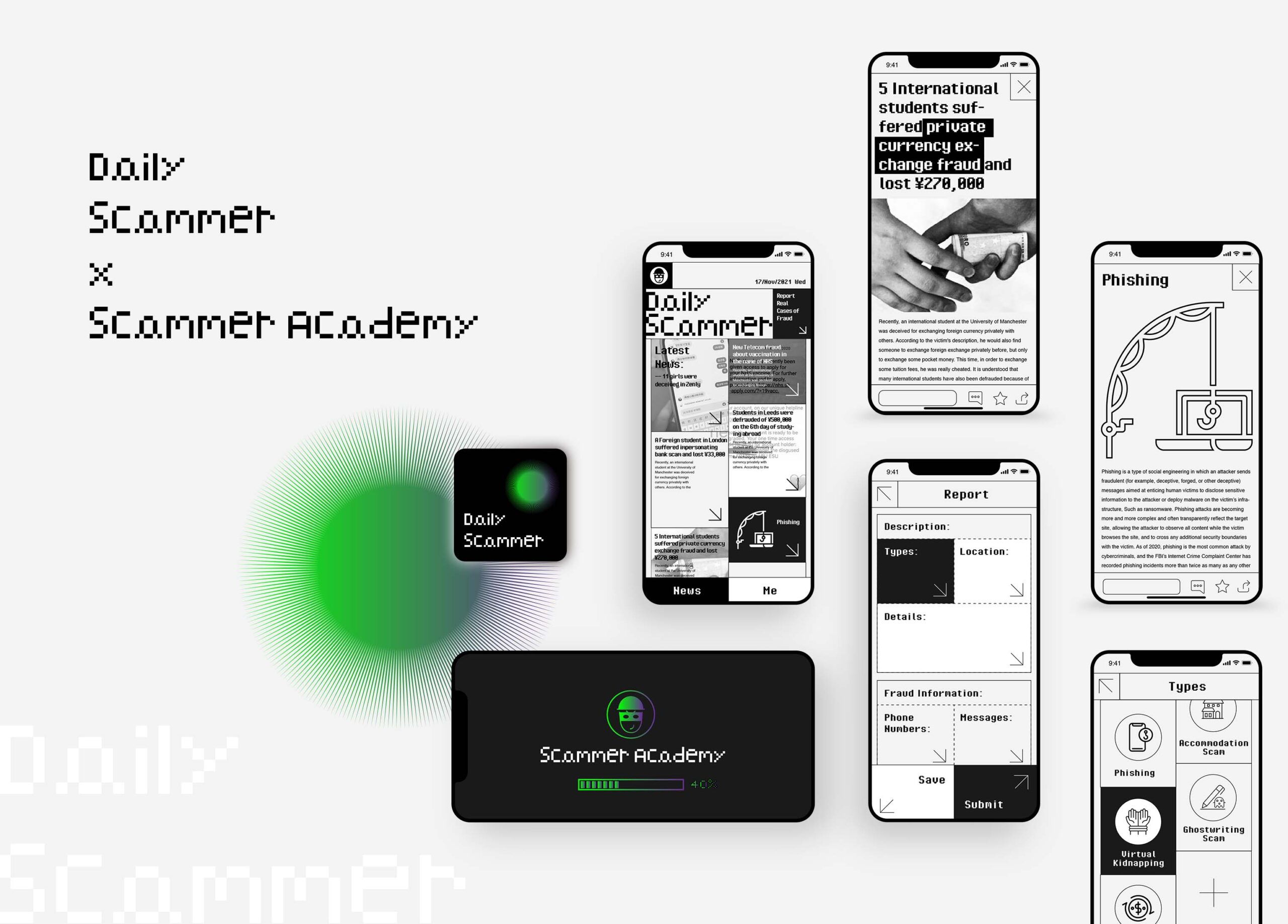
Daily Scammer is a newspaper that reports real cases of fraud to international students in the UK. Users can report and share their experiences of encountering fraud through the platform. New scams, real stories of victims, and the latest survey of fraud would be updated on the app. These real cases and relevant information of fraud would also be published in the form of newspapers and spread on the campus to let more international students touch and know.
In Scammer Academy, users can “learn how to be a scammer” by understanding various kinds of frauds. This process can help users know scams and how it works. When they encounter frauds in real life, they can identify it and avoid being cheated.
This project is aimed at calling people to share their experiences of fraud and helping more people know how to identify scams and avoid being scammed by learning knowledge about scams actively.
1. Research
My research question is How Might We help international students in the UK identify fraud and avoid being cheated because this is a problem that most students studying abroad will encounter. Some survey data show that the trend of fraud against international students is increasing every year, and many students suffer from it.
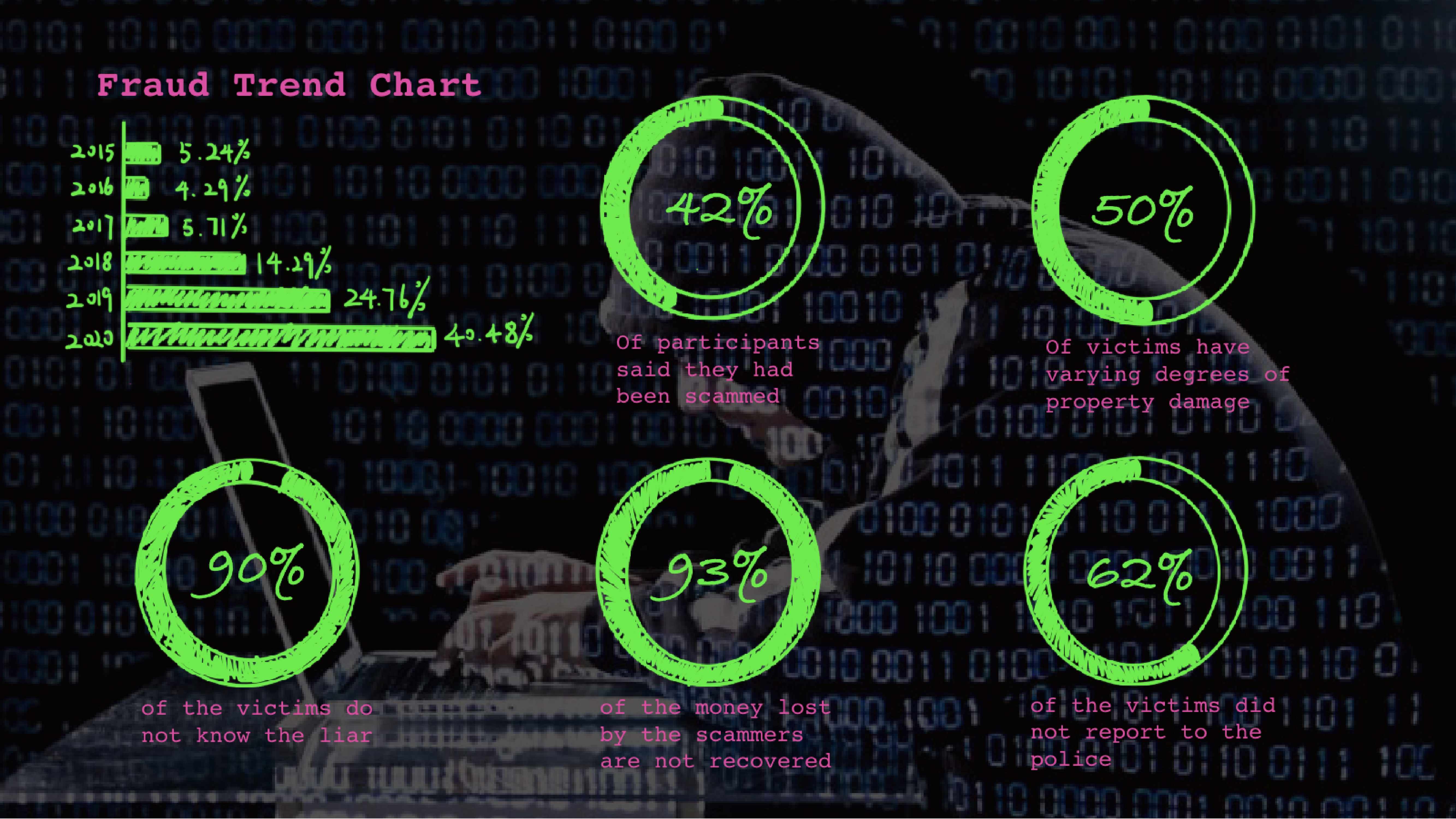
The reasons why international students are easily to be the targets of scammers:
Some characteristics of international students make them easy to be targeted by scammers.
- Unfamiliar with local environment, culture, law, and habits that are different from where they come from.
- Young and do not have too many life experiences.
- An unfamiliar environment can make these international students feel nervous and afraid easily.
- International students usually carry a large number of funds given by their parents to prepare for emergencies.
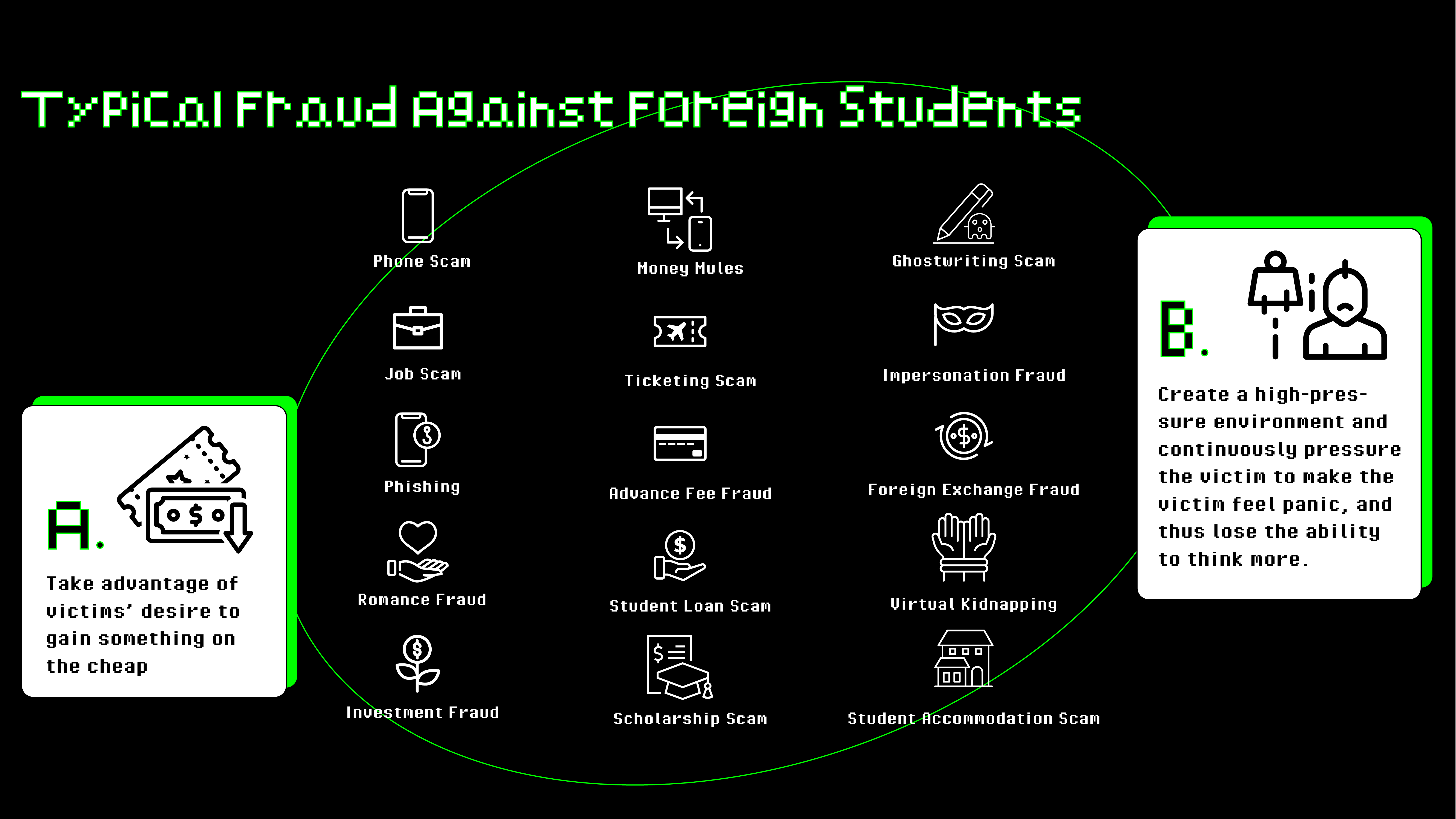
Most typical fraud against Foreign students can be divided into two groups. One is making use of victims’ desire to gain something cheaper, and another is putting pressure to make victims feel panic and lose the ability to think more.
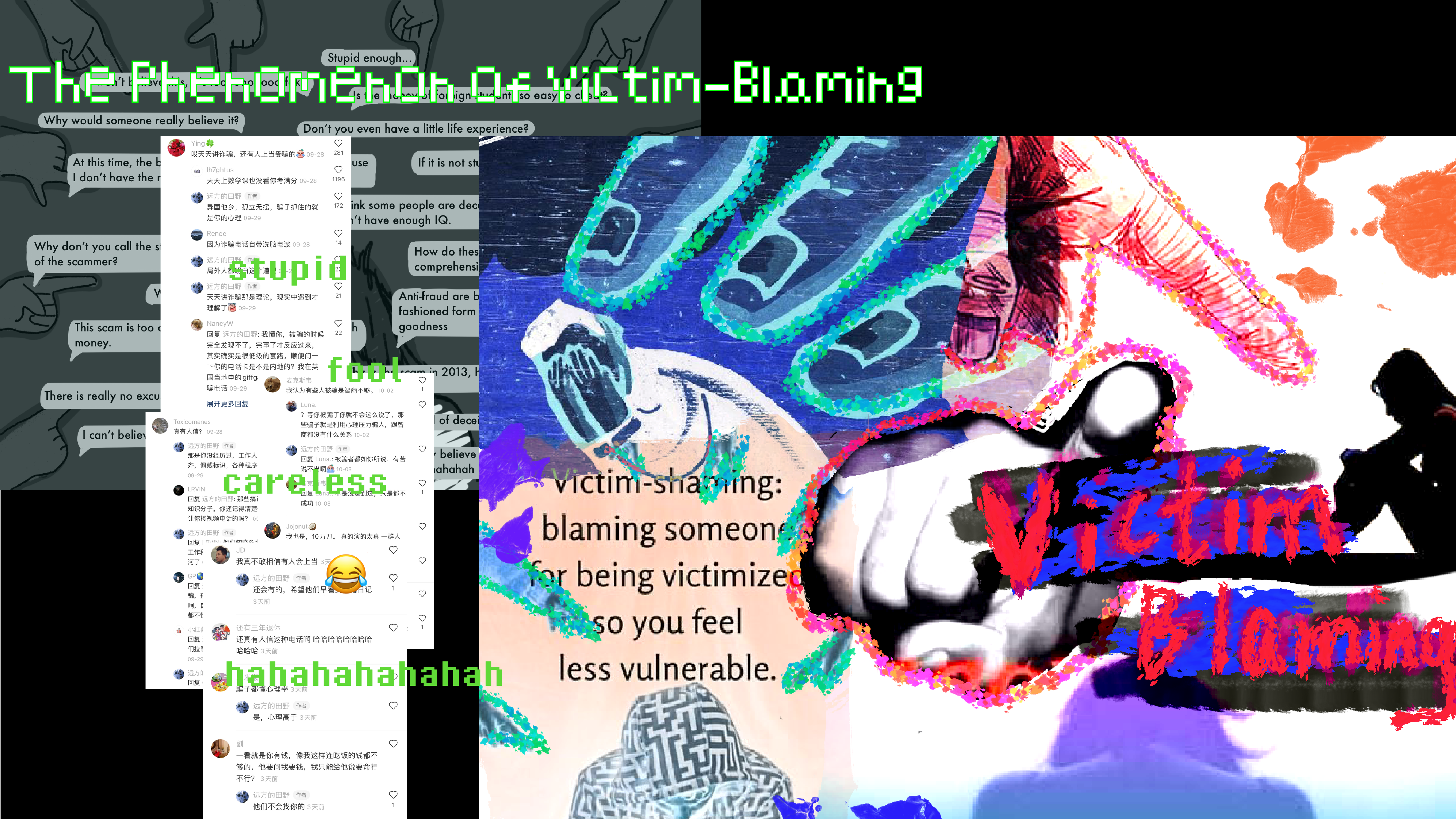
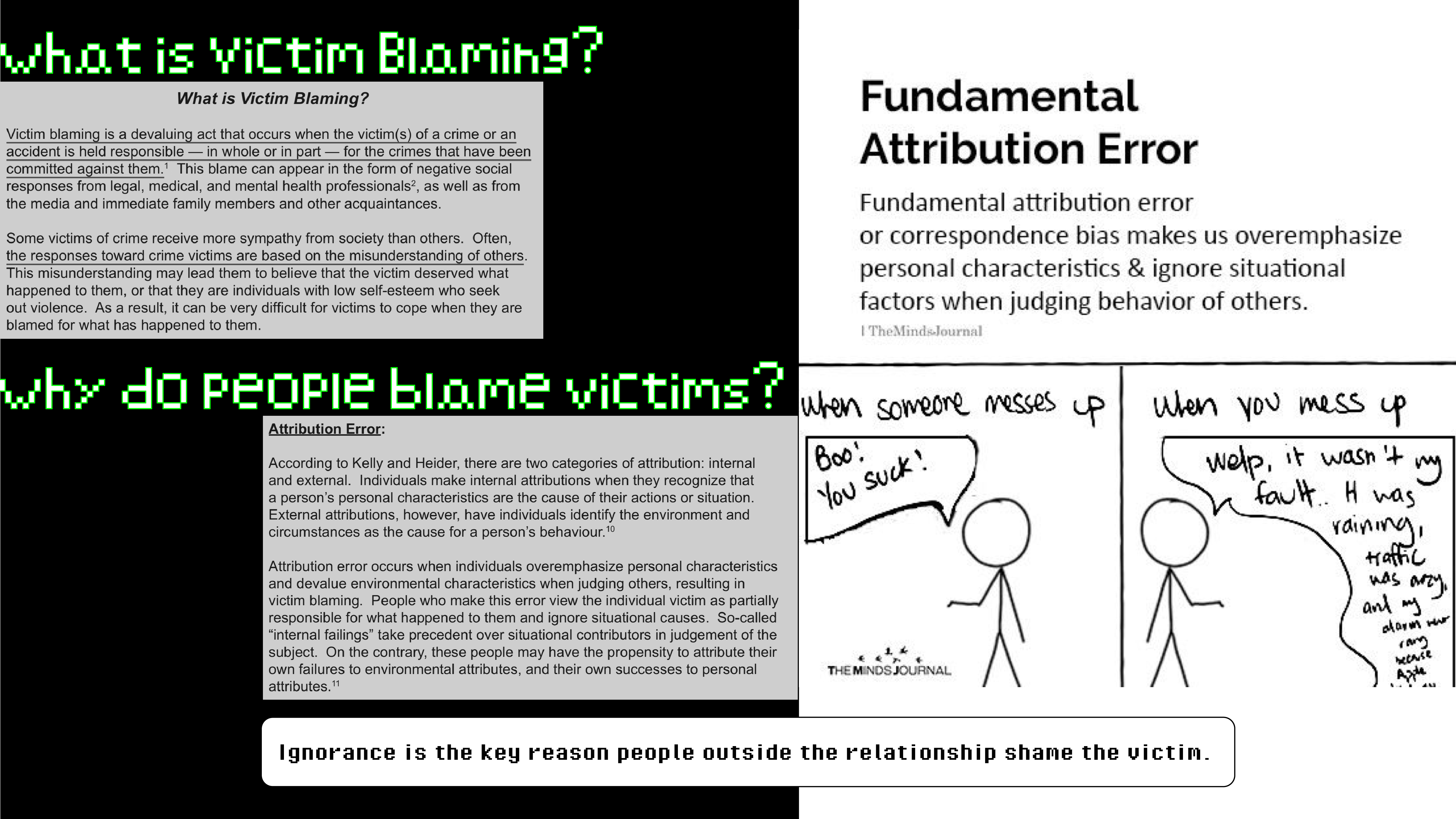
In the process of researching, I found that some victims not only suffer financial losses, but also mental shocks. For example, when they share their experiences on social media, some other people will blame and laugh at them, which is known as Victim Blaming. So I did some researches on this phenomenon, and try to know the reasons why people blame victims. The behavior of blaming or shaming will cause secondary injury to victims. And then, they may be unwilling to speak out about experiences any more, which would cause more people to suffer from fraud.
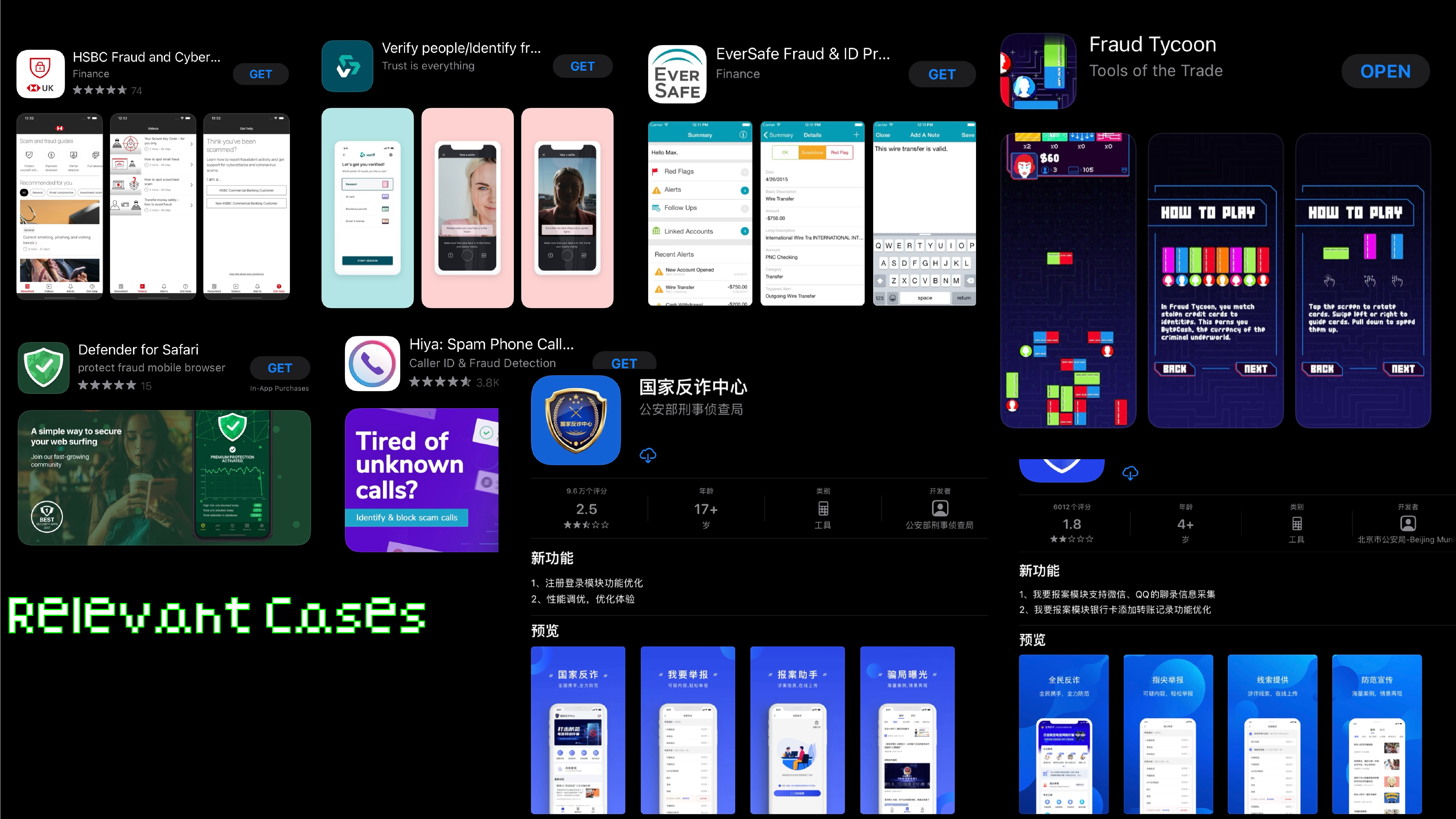
In addition, I searched existing apps and other cases that related to fraud which displayed other people’s attempts in this topic, and it may help me gain new inspirations through referring to how other designers think and what they did before.
2. Questionnaire
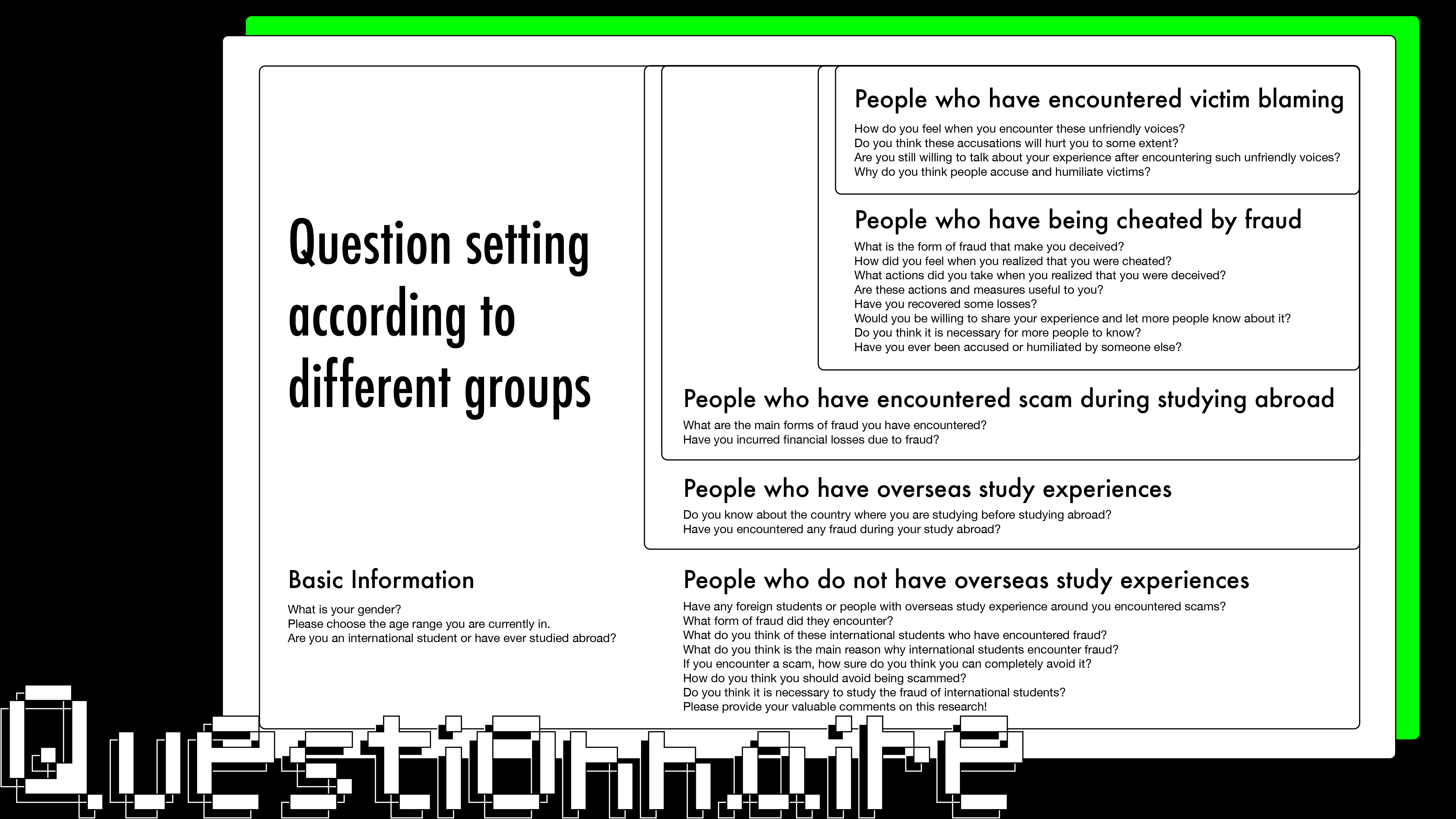
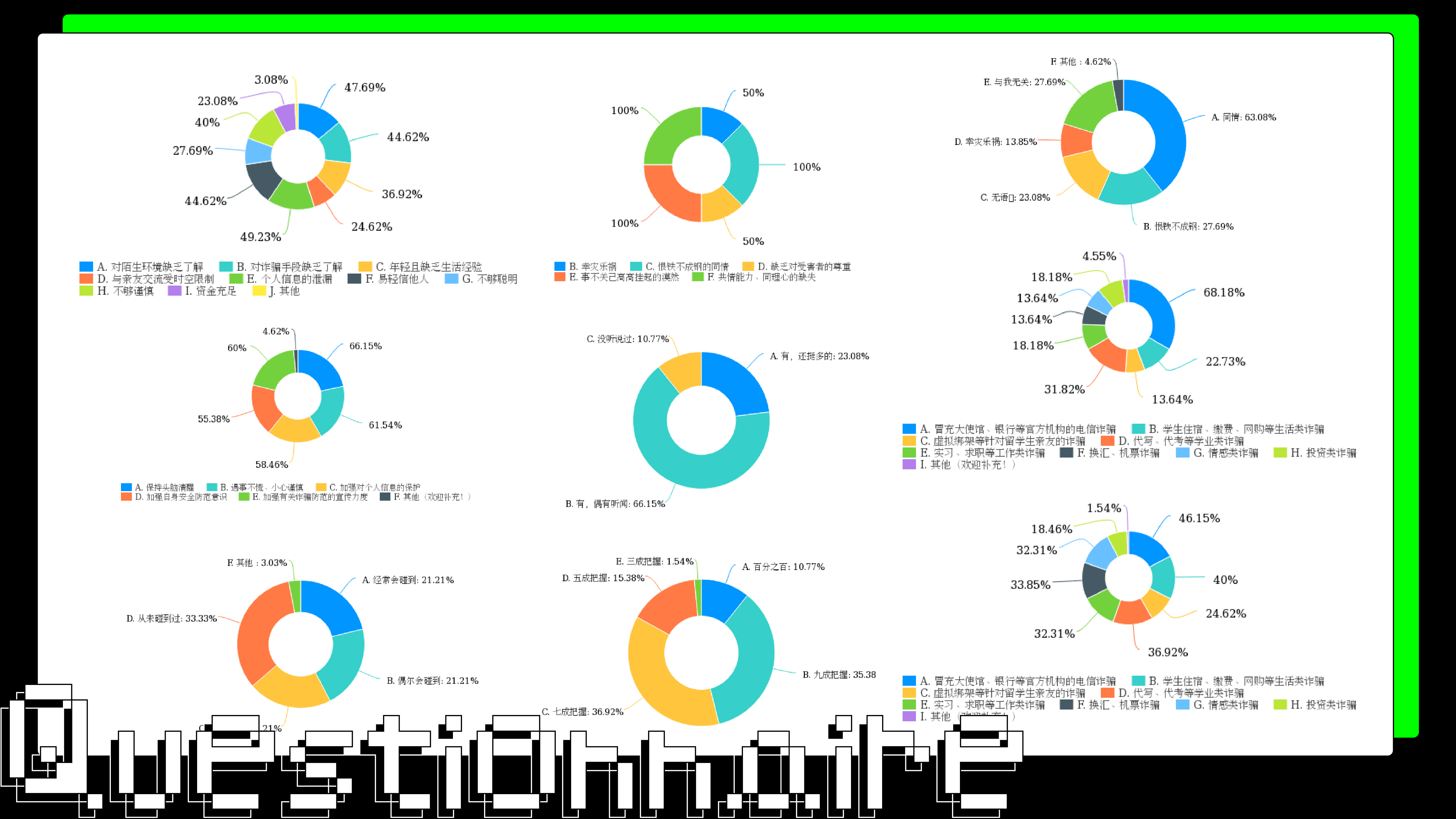
3. Interviews
Goal:
- Collect and understand real stories to do case studies.
- Have a deep understanding of my target group.
- Gain some different insights from the interviews.
Process:
- Questions were crafted to guide discussions
- Recorded the interviews and took notes to organize after it has ended.
- Based on the conversations to gain some different insights
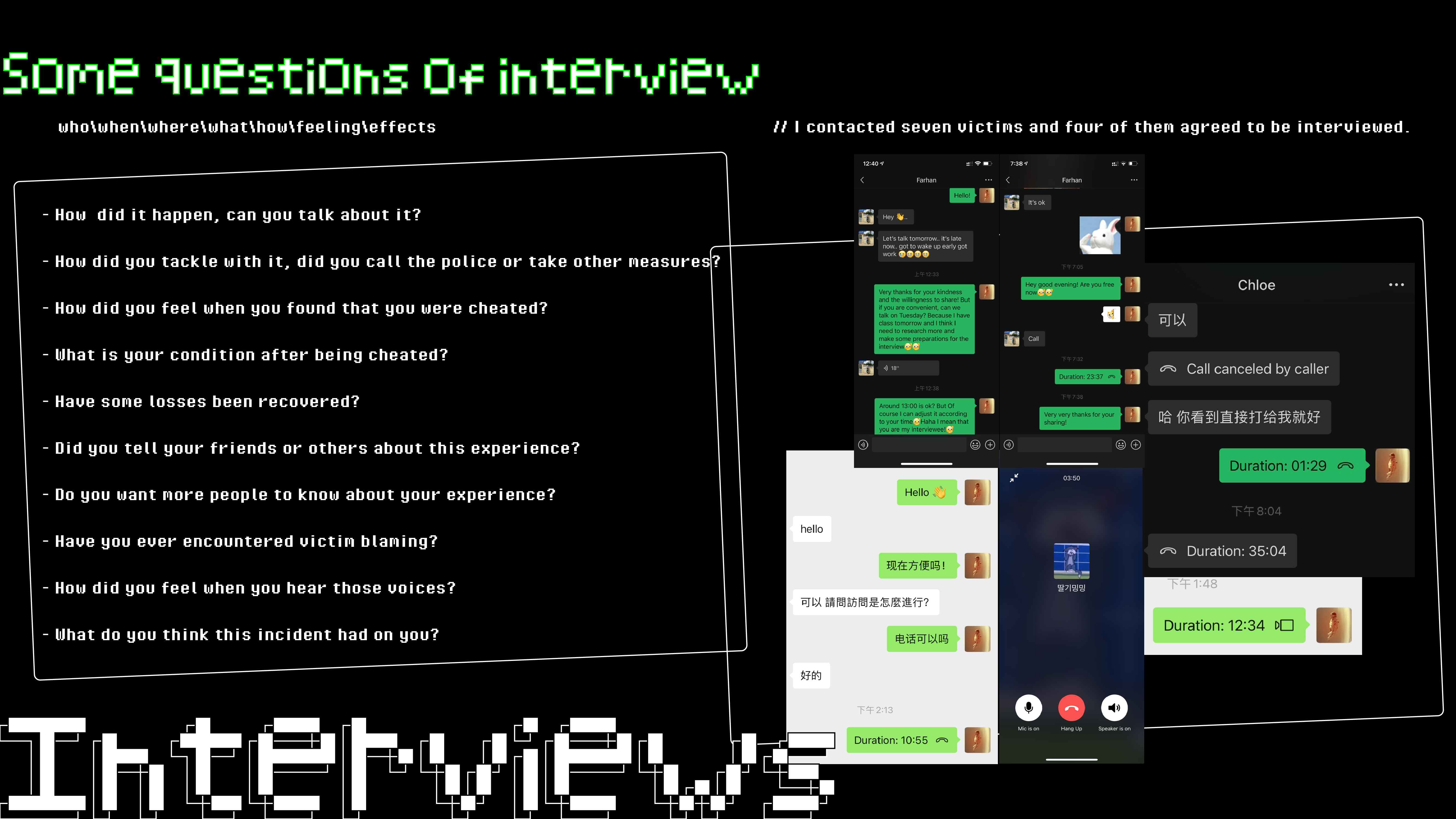
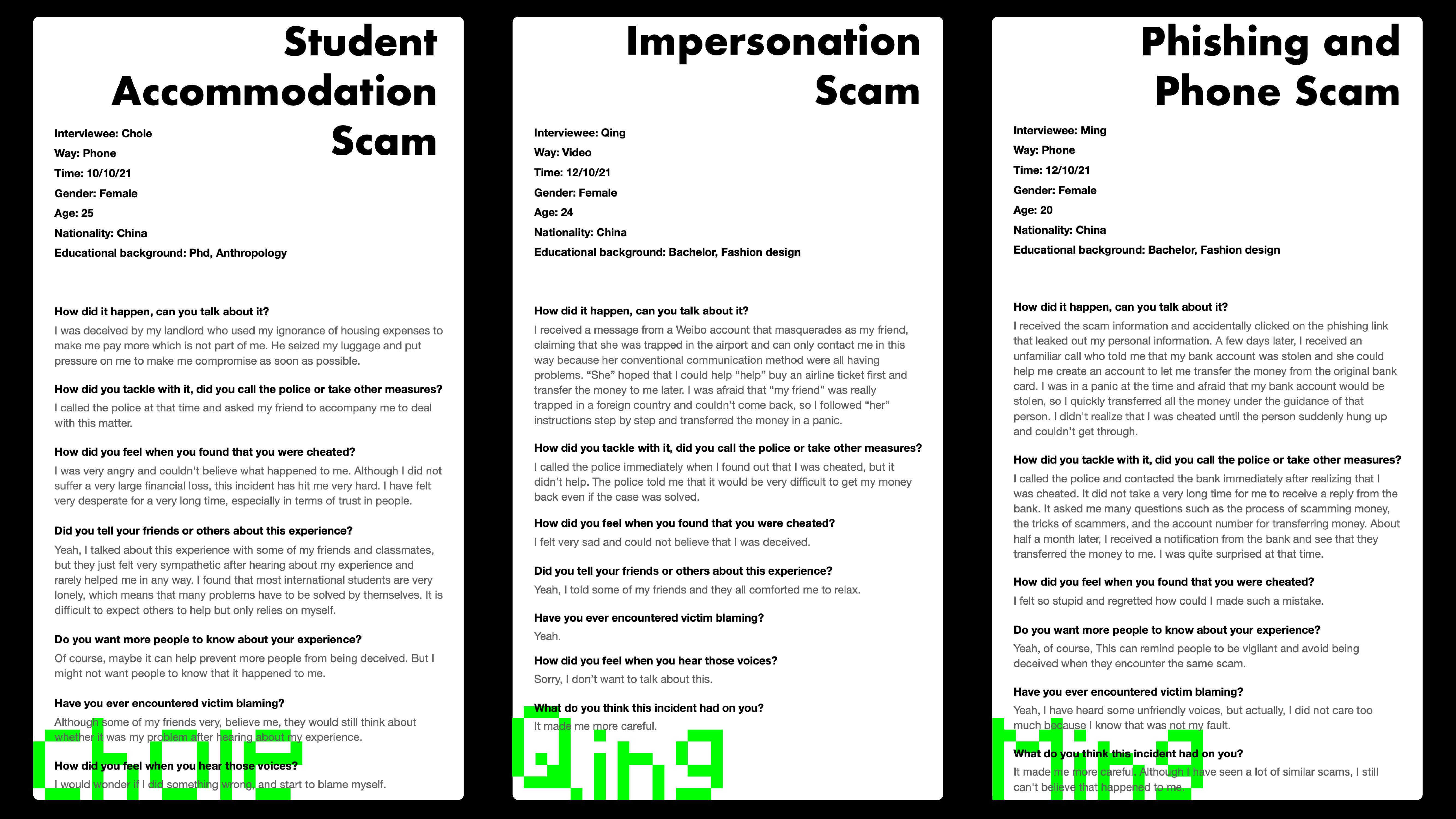
Some Insights from Interviews:
- When they found out that they were deceived, their first reaction was that they could not believe that they were deceived, and they were shocked, regretful and sad.
- They would call the police or contact the relevant official agency after being deceived, but only one of them recovered her loss after contacting the bank immediately.
- They would tell their friends about their experiences in order to seek comfort and help.
- But they have to rely on themselves because the help of friends or someone else are very limited to them. Most of the people around them are also international students who have their own business to be busy with.
- While fraud has caused their economic losses, the mental shock is equally severe. They will suspect that it is their own problem, feel self-blame, and lose their trust in others at the same time.
- The victim blaming will aggravate this mental blow.
- Although they all know that speak their own experiences out can help more people avoid being deceived, they choose to remain silent or prefer to share their experiences anonymously because of various concerns.
4. User modeling – persona
My user group is those international students who have already suffered from fraud and who have not, because most international students would encounter several kinds of scams, which are known from questionnaires. Meanwhile, I summarized the frustrations and needs of the user group based on the previous interviews.
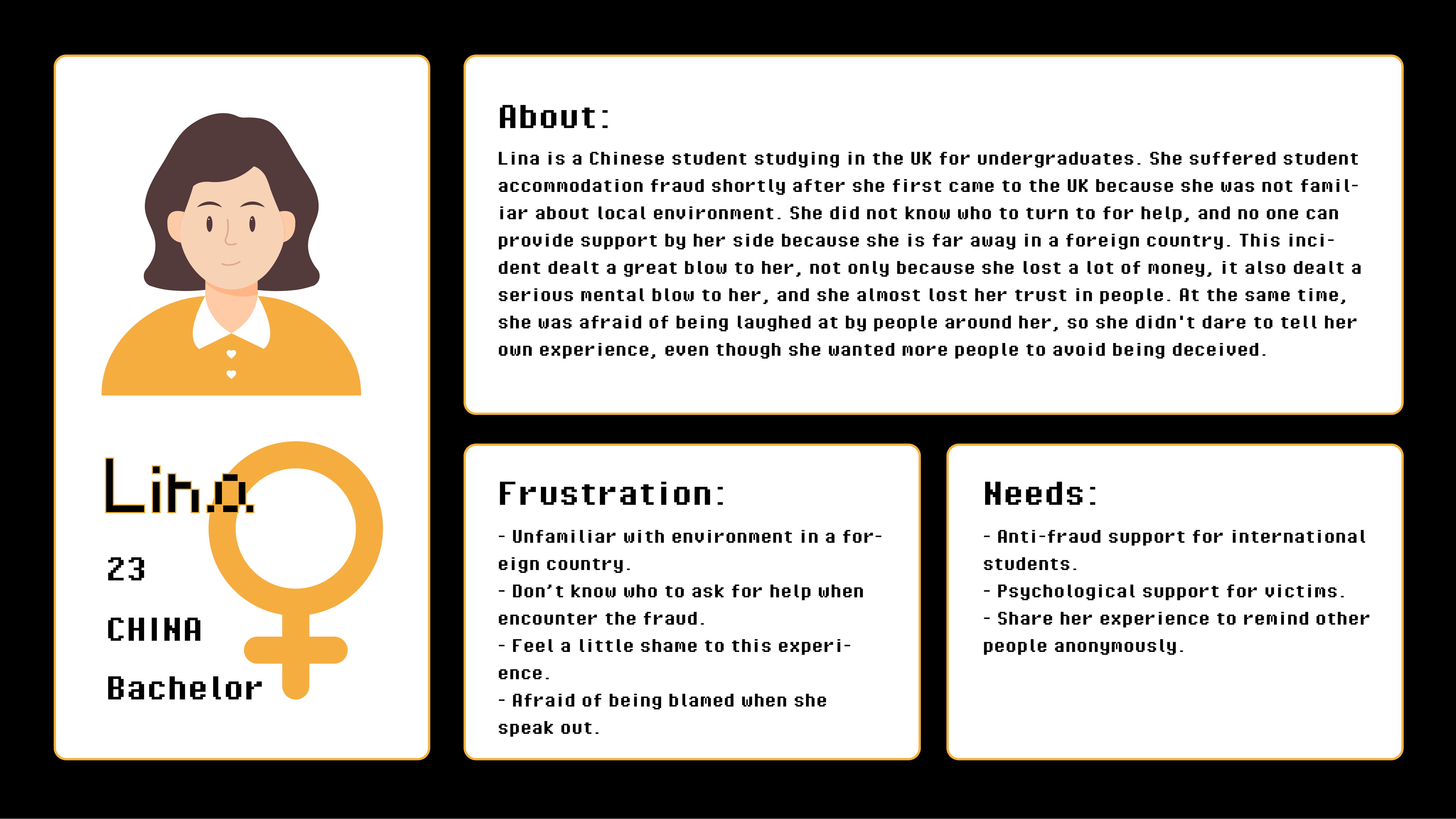
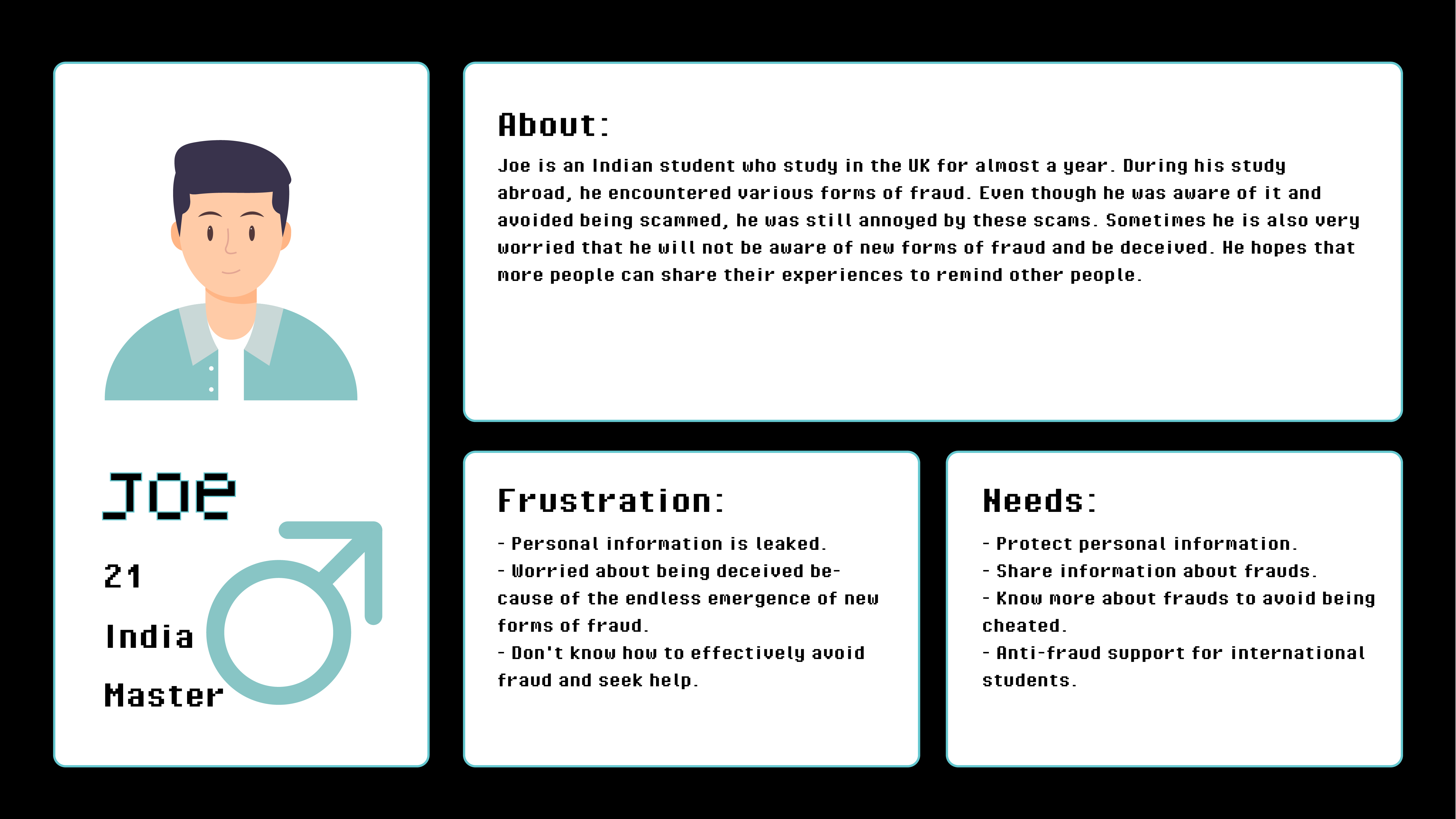
5. Thinking and initial idea
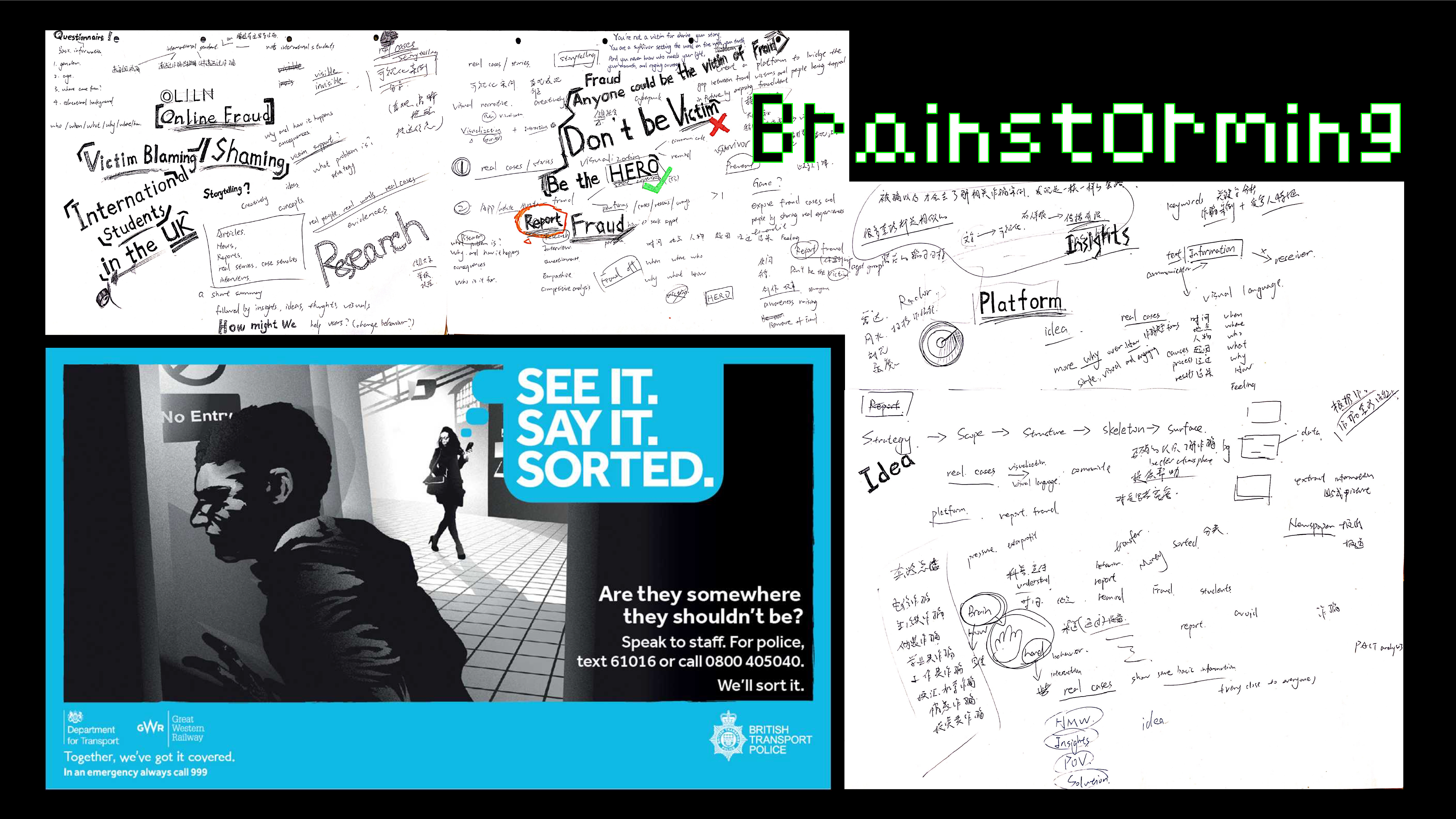
Only letting more people know about these real cases can prevent more people from being deceived, so it is very important to report fraud. And I found that those who have encountered fraud but found out in time will be more willing to share their own experiences.
“SEE IT. SAY IT. SORTED.” is a memorable and motivating call that encourages passengers to speak to a member of the rail staff to text British Transport Police if they see something unusual. Actually, anyone could be the victim of fraud,don’t be that victim or potential victim, but be the one who reports fraud which can help avoid more people suffering from fraud.
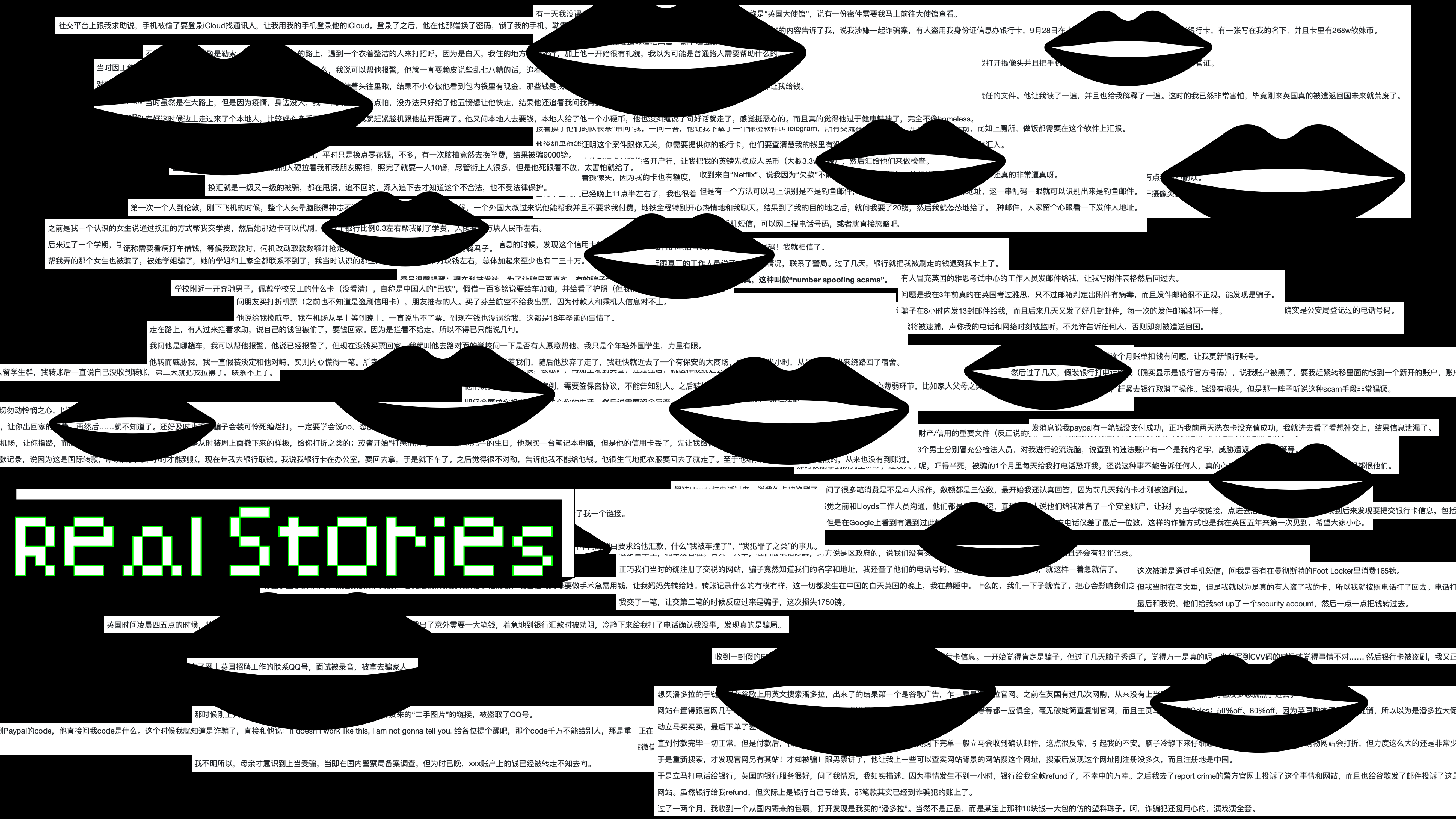
Meanwhile, I collected many real stories of fraud against international students and found that many of the scams are similar. Victims often look for related cases after being scammed and finally find that they are the same. This shows that even if someone reports and shares relevant experiences, such communication of information is limited.
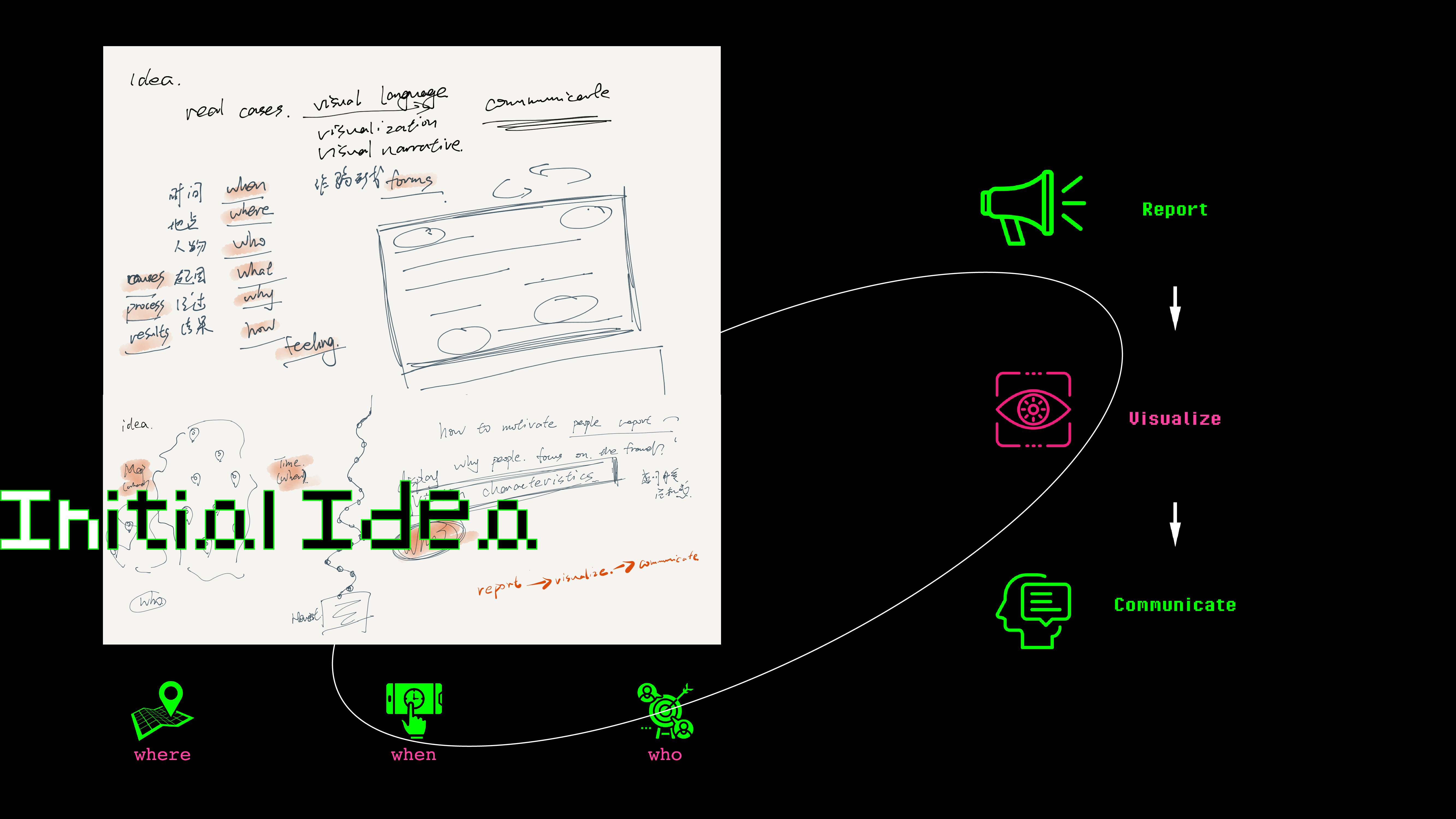
So, my initial idea was about visualizing these real cases which are narrated by words, integrating the information visually by extracting the relevant elements. Then, it can be more intuitively received by more people. Through providing a platform that people can share their experiences of encountering scams, and this information can be better communicated by visualization. Users can check the latest fraud cases around them according to the location and time. At the same time, the display of the characteristics of the victim can also remind that the fraud is very close to everyone.
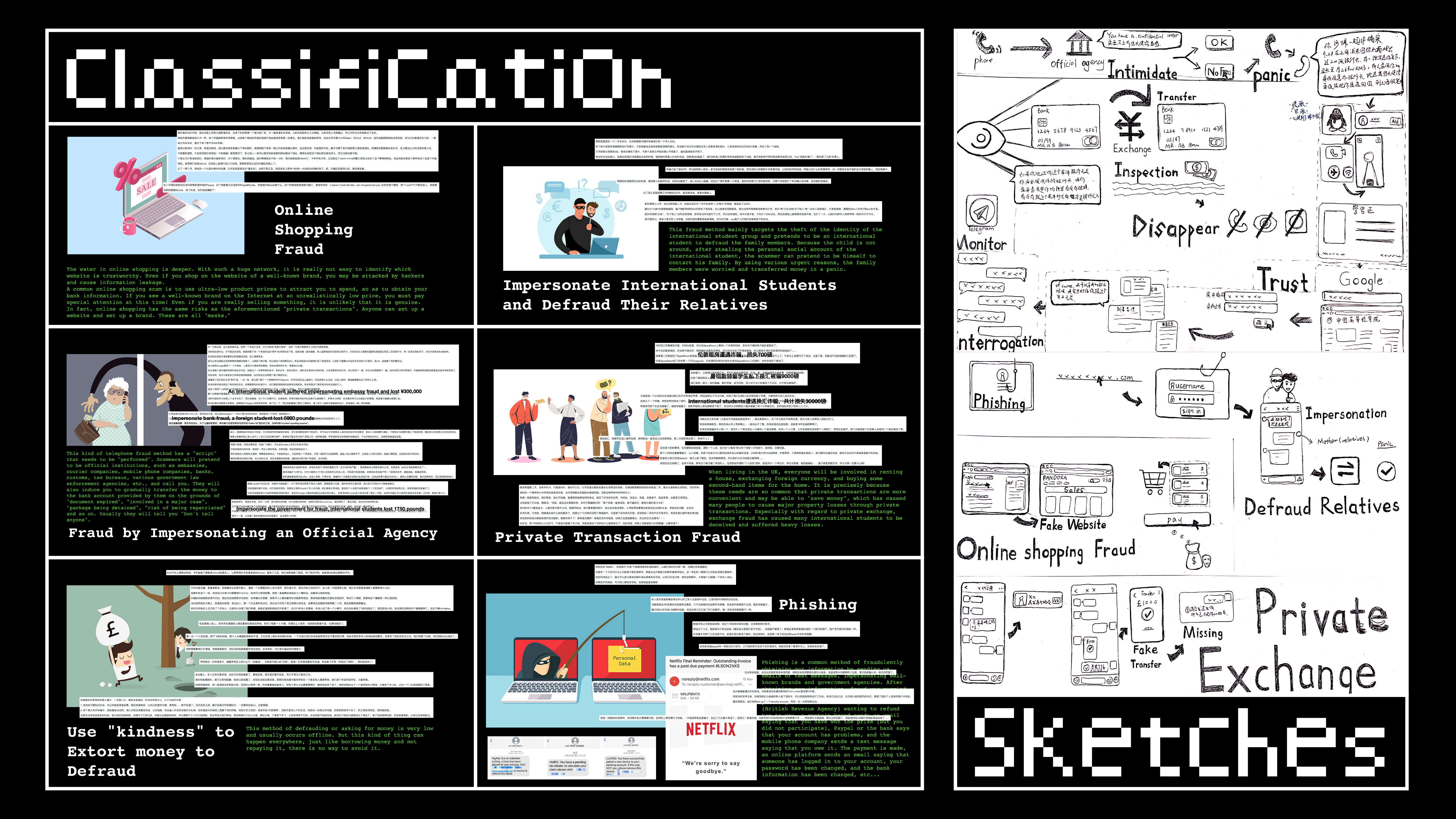
First, I grouped real cases that I collected according to the different types. And then, I choose several scams that are most common and try to display them in a visual way based on the processes, but the narrative style and focus of everyone are different, so it is not easy to visualize every real story when people report it in the platform.
6. Idea iteration
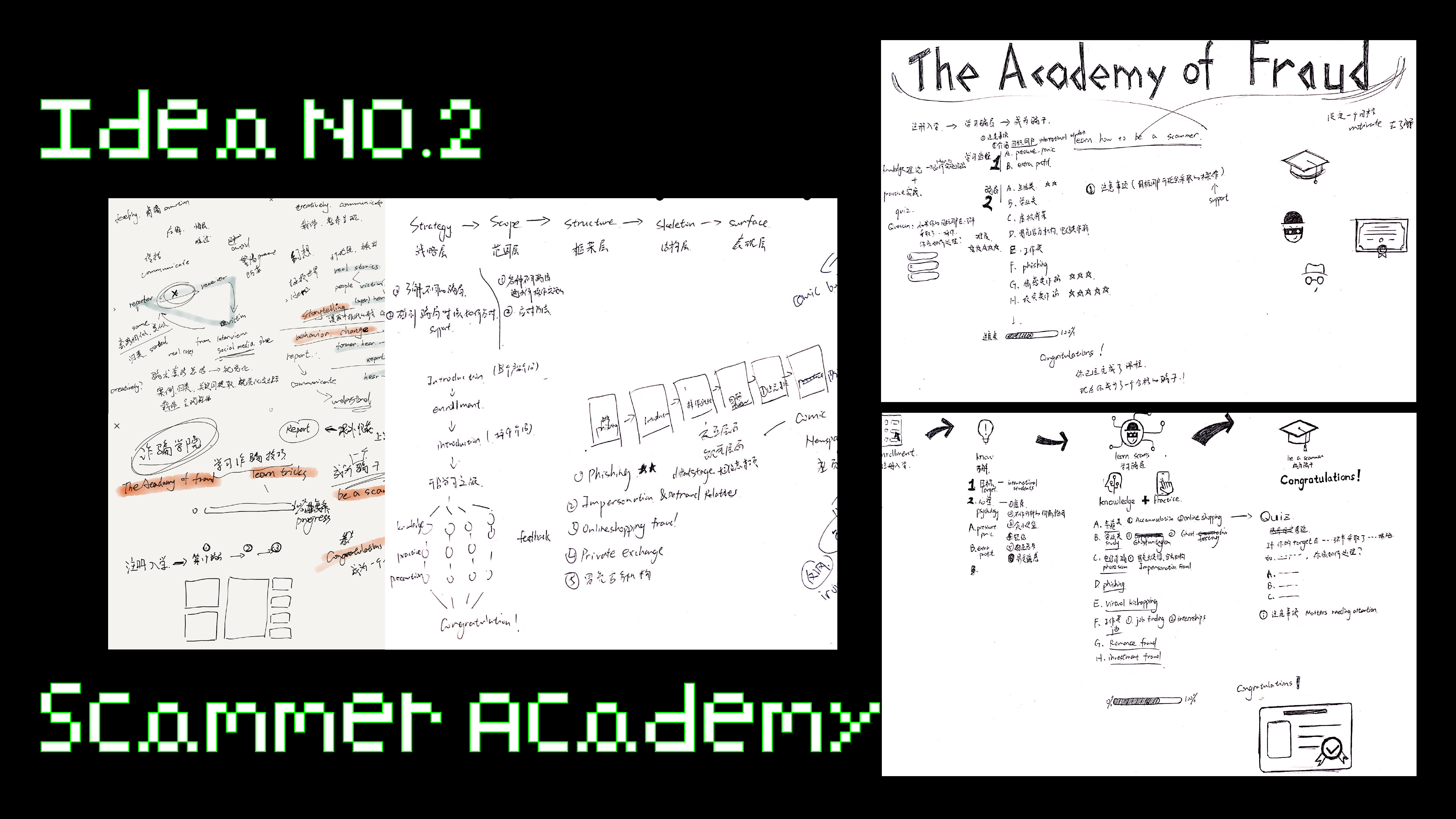
So, my second idea is about creating an academy of scammers, that users can “learn to be a scammer” through understanding several kinds of scams which most of which are similar. In the process of “learning”, users can gain more knowledge of the fraud. Then, they can identify it and avoid being cheated when they encounter the similar one.
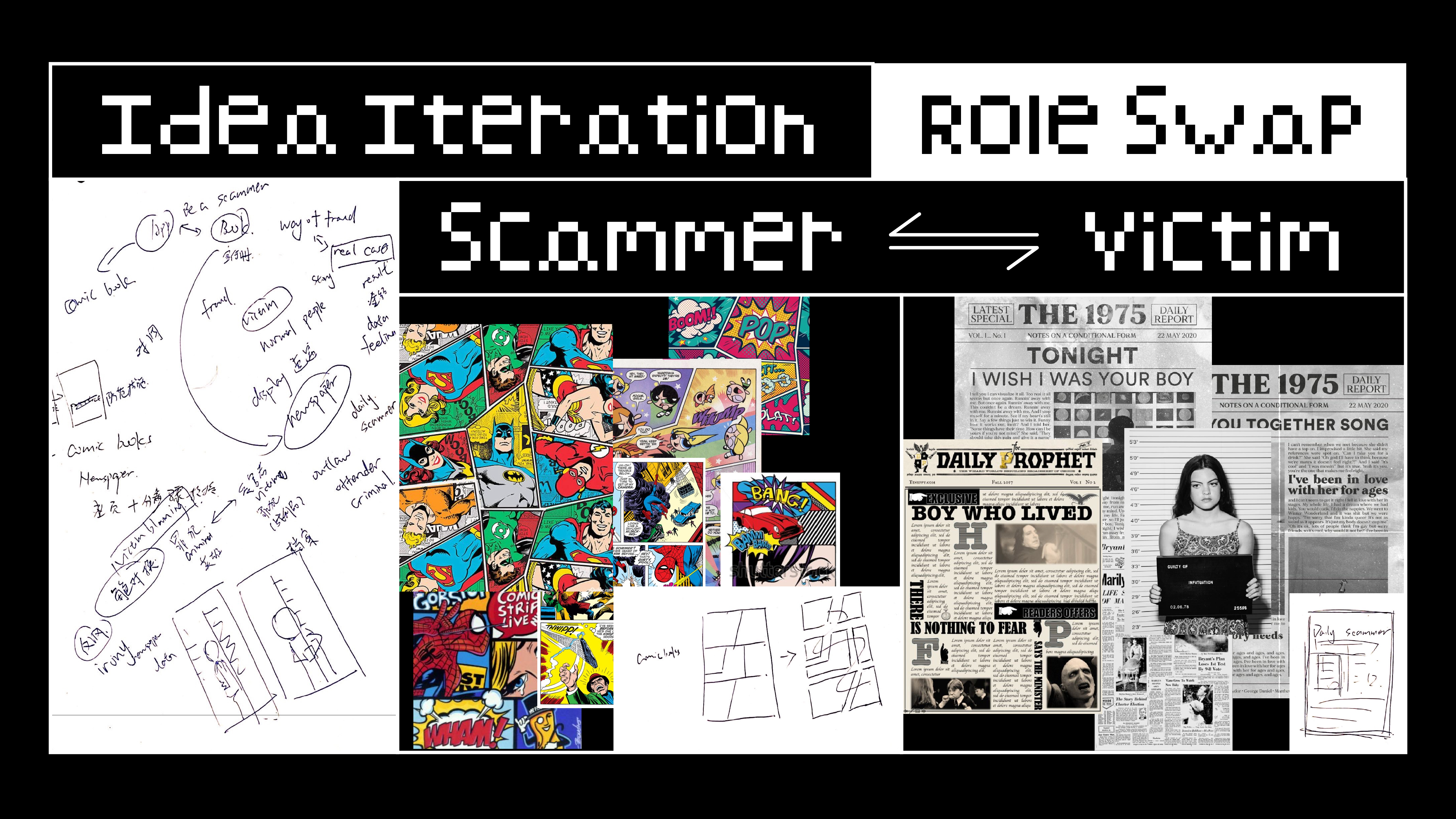
Meanwhile, due to the phenomenon and consequences of victim-blaming, I want to swap the role of scammer and victim. The irony of this phenomenon can be expressed through putting the victim in the position of being condemned which is ought to be a scammer’s while being a scammer is something that to “be proud of”. The display form of scam in Scammer Academy refer to comic books of superhero and convey it in the way of storytelling. Besides, I want to create a platform that real cases of fraud can be reported and publicized in the form of newspapers that reflect reality.
7. App Design – Daily Scammer
Based on The element of user experience, the function of this platform mainly focuses on showing the real information of fraud, reporting that users can share experiences and Scammer Academy in the level of ‘Scope’.
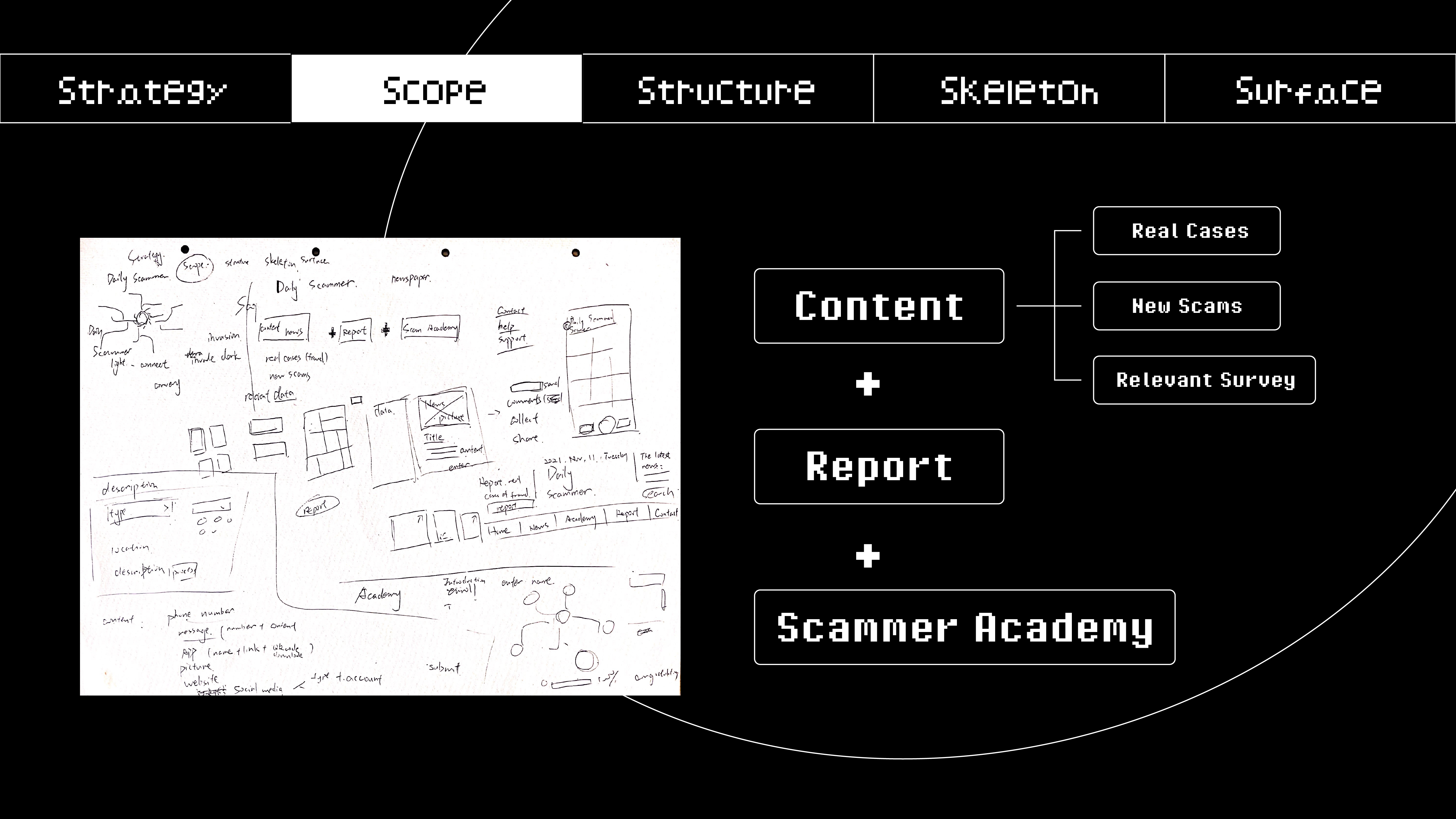
1- Information Architecture
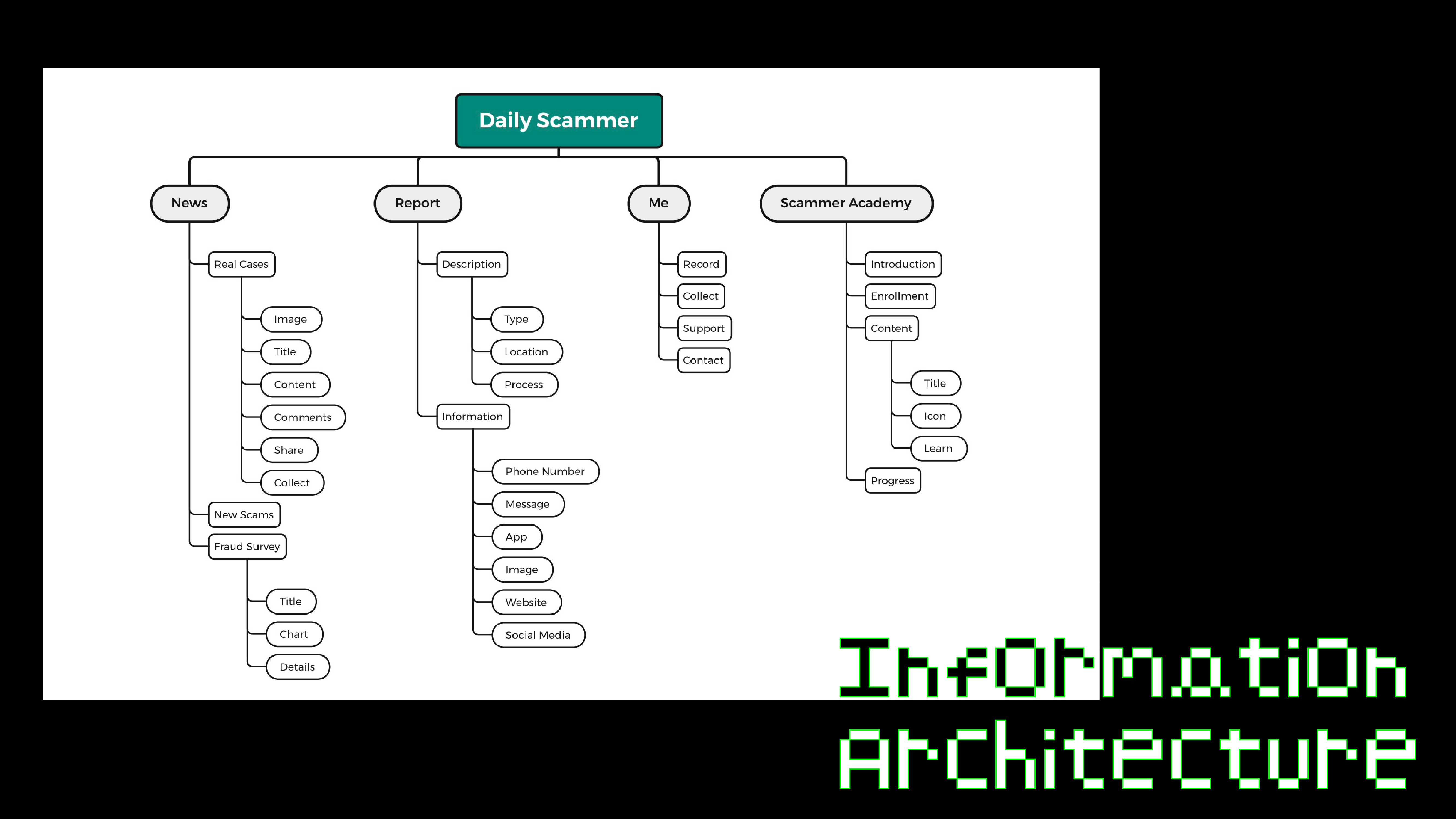
2 – Wireframes
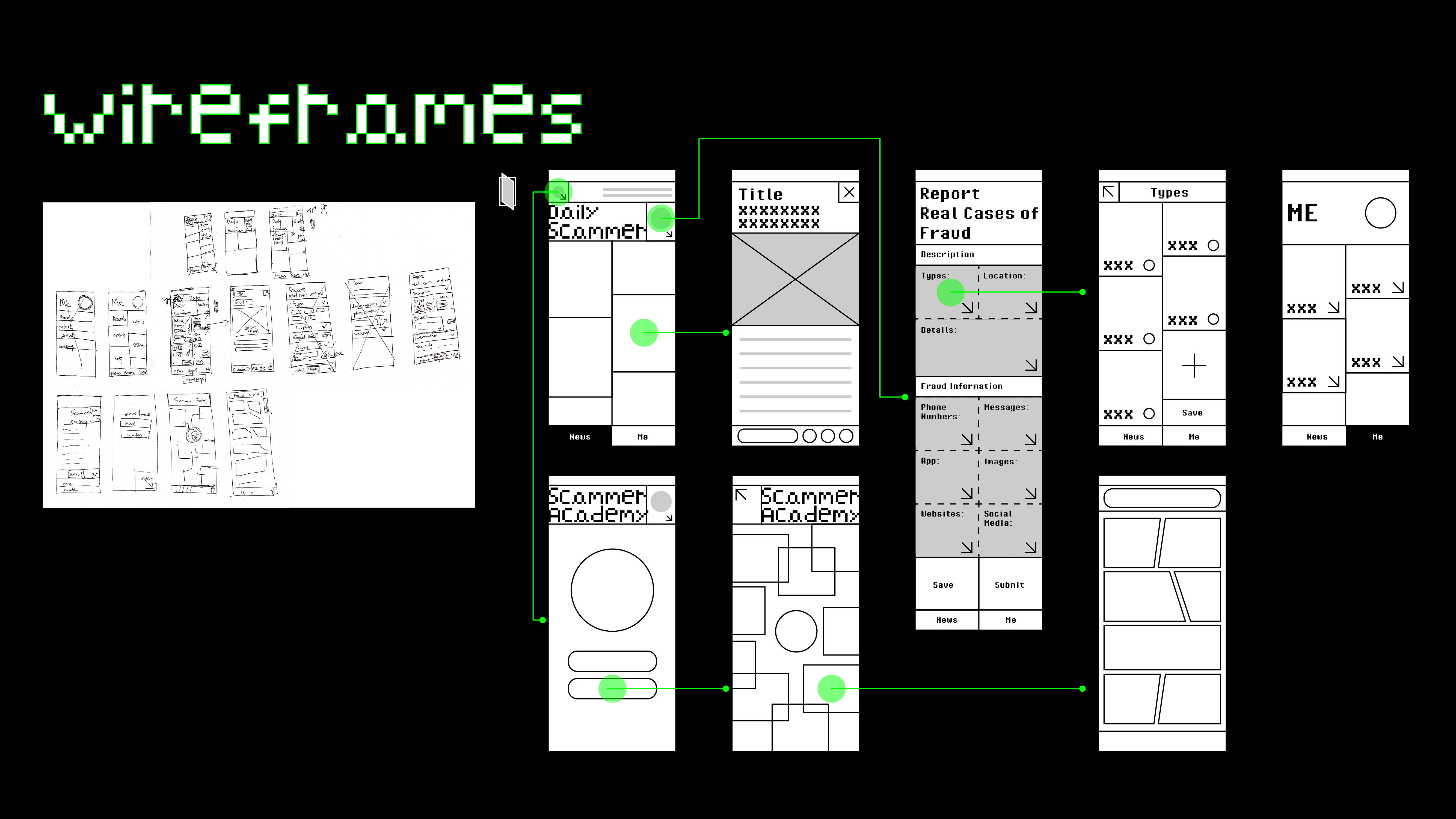
3 – Visual Elements

4 – Prototype
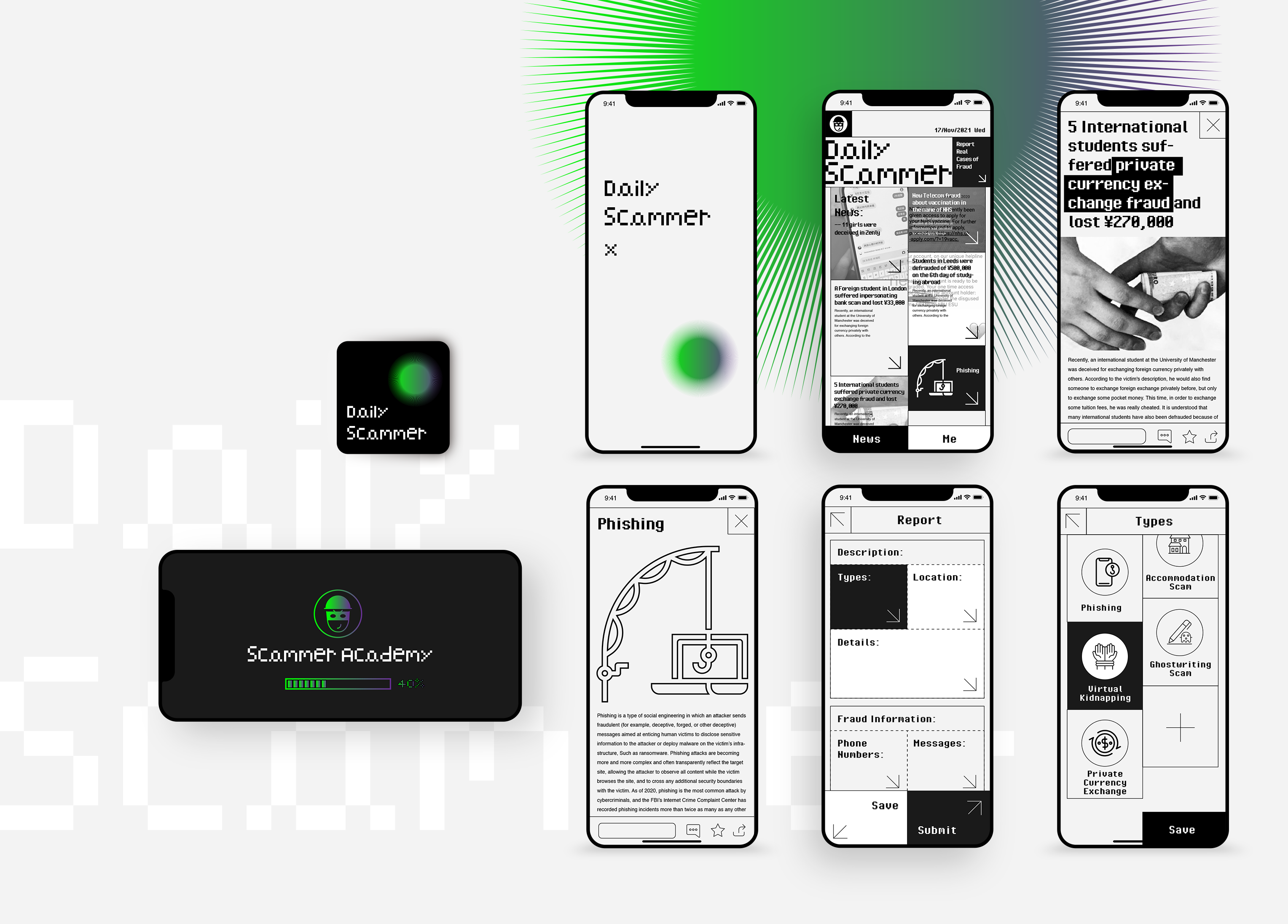
8. Newspaper – Daily Scammer
1 – Sketches

In addition, these reports of fraud on the platform would also be published in the form of printed newspapers and spread on the campus to let more students touch and know. The newspaper called Daily Scammer reports real cases of victims are like the news report about who the criminal was and what happened to the case, but the position that was originally a criminal is replaced with a victim to introduce the stories of victims.
2 – Collage
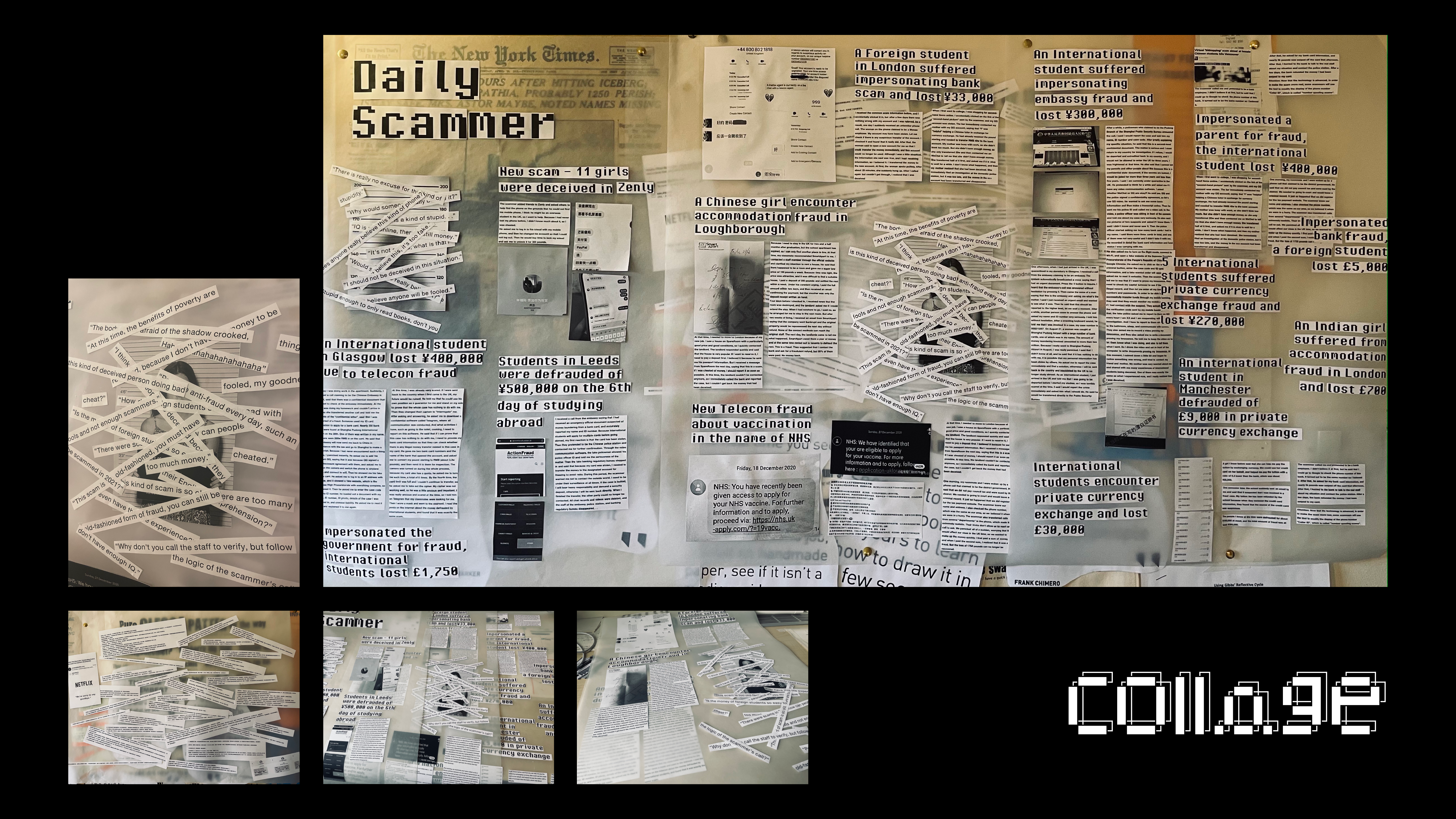
I made collages in the use of real stories and some unfriendly comments to victims.
3 – Visual Language

At first, I want to use the characteristics of international students to represent the persona of the victim in the position of mugshot which ought to be a scammer. However, what made victims in that position is not the characteristics of themselves, but the prejudices of people.
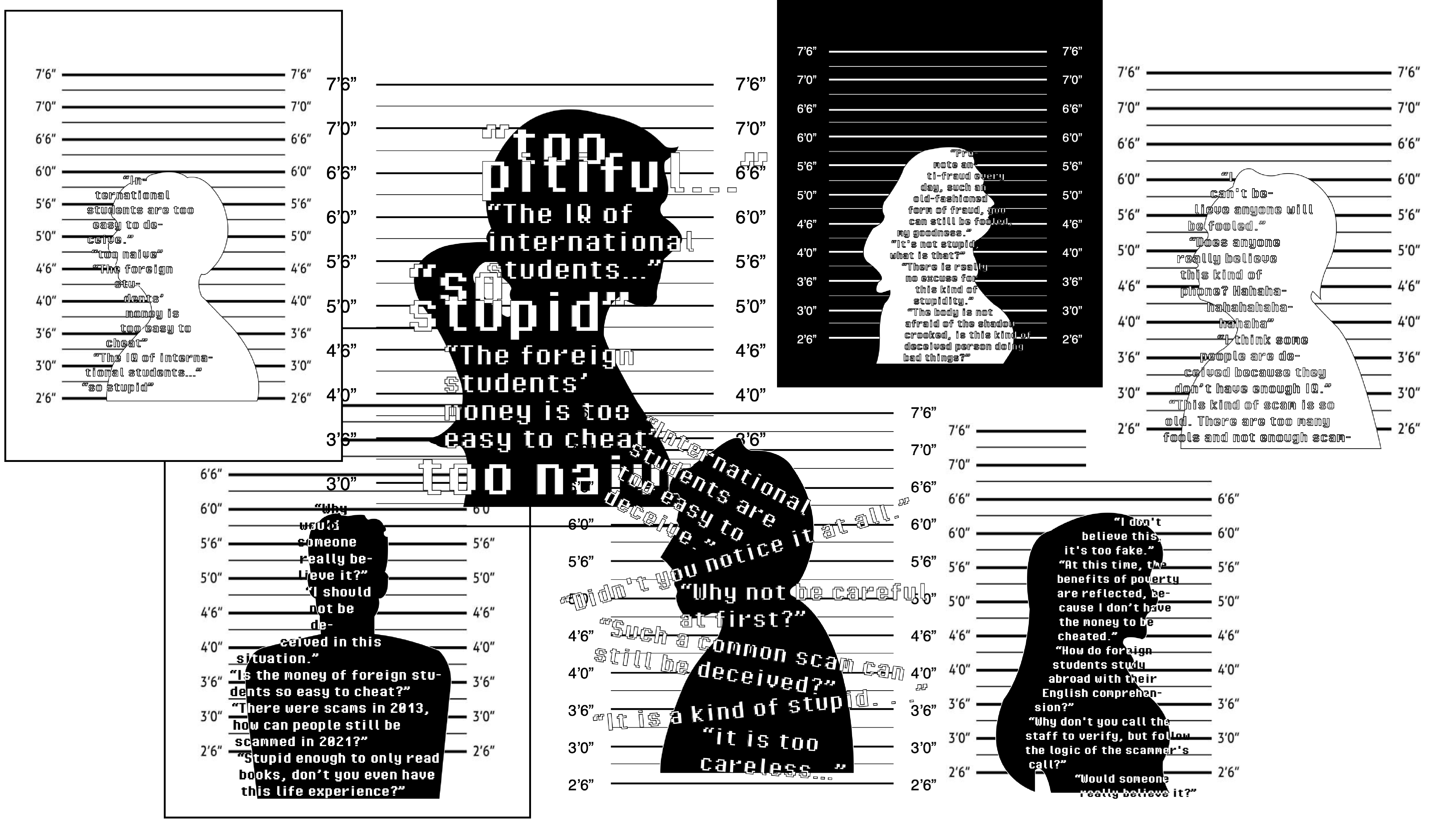
So, I collected many unfriendly comments under the posts that victims shared their experiences on social media which can represent the prejudice of people to form the mugshot of victims.
4 – Initial Layout
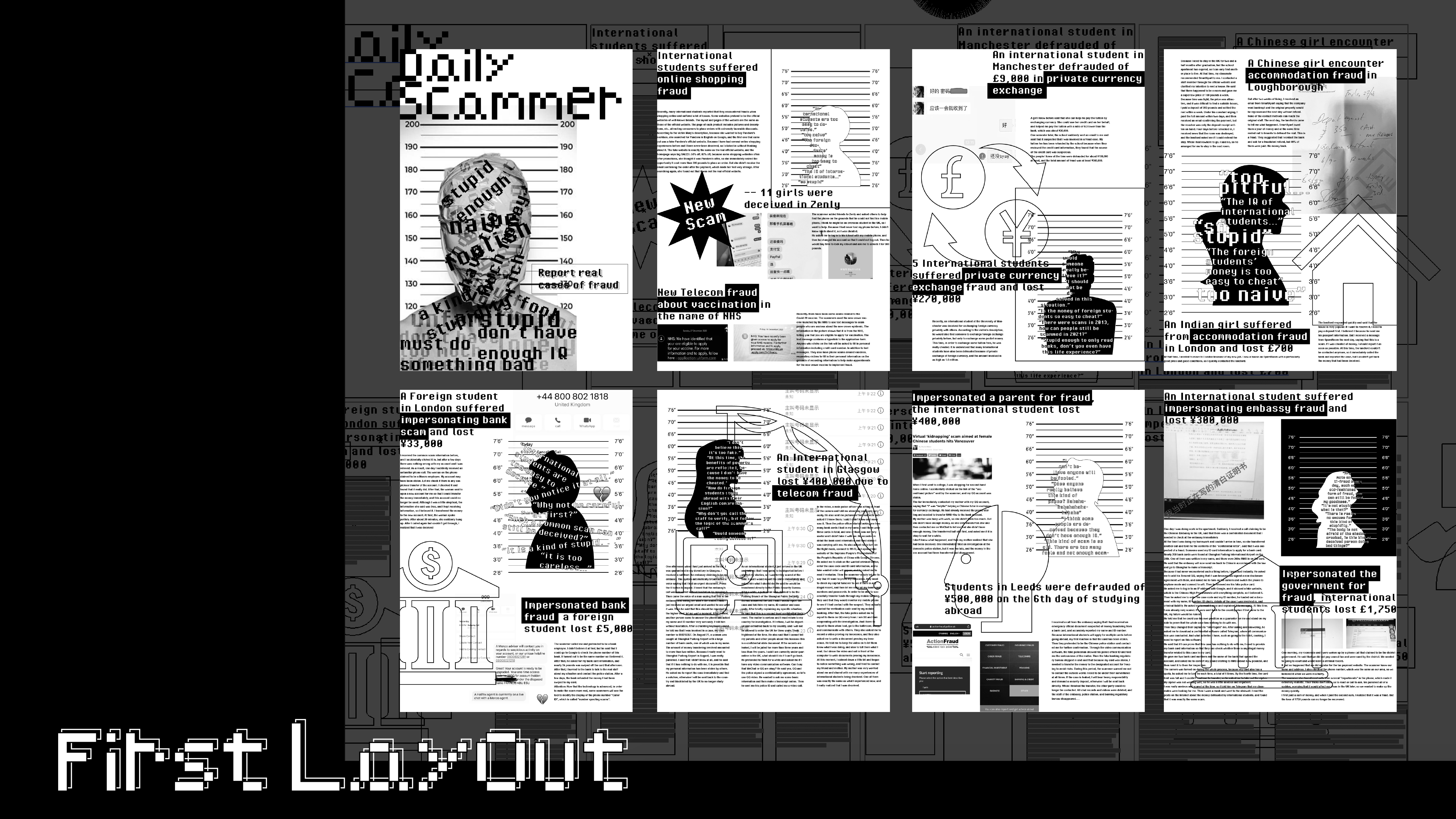
5 – Layout Modification


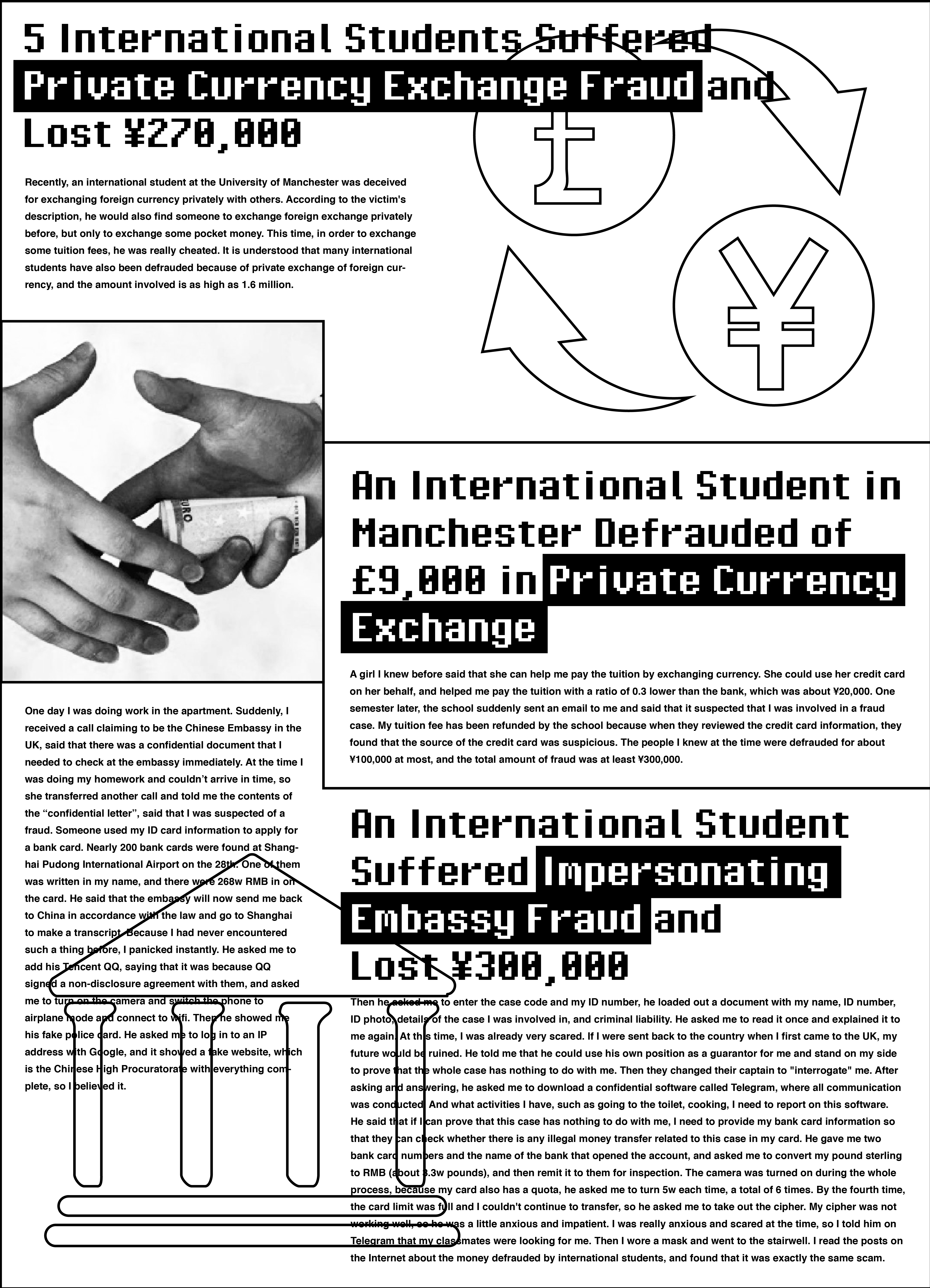
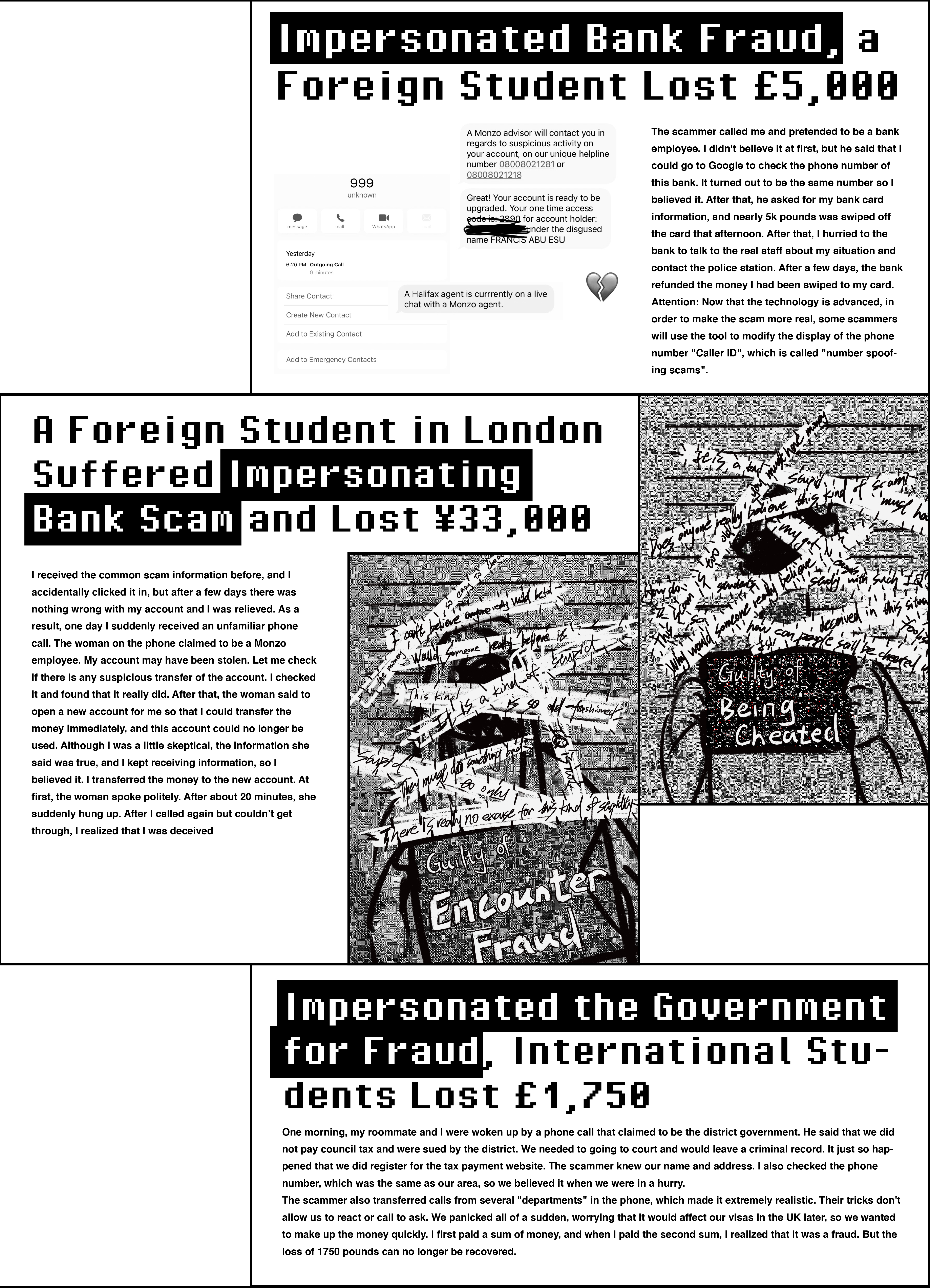
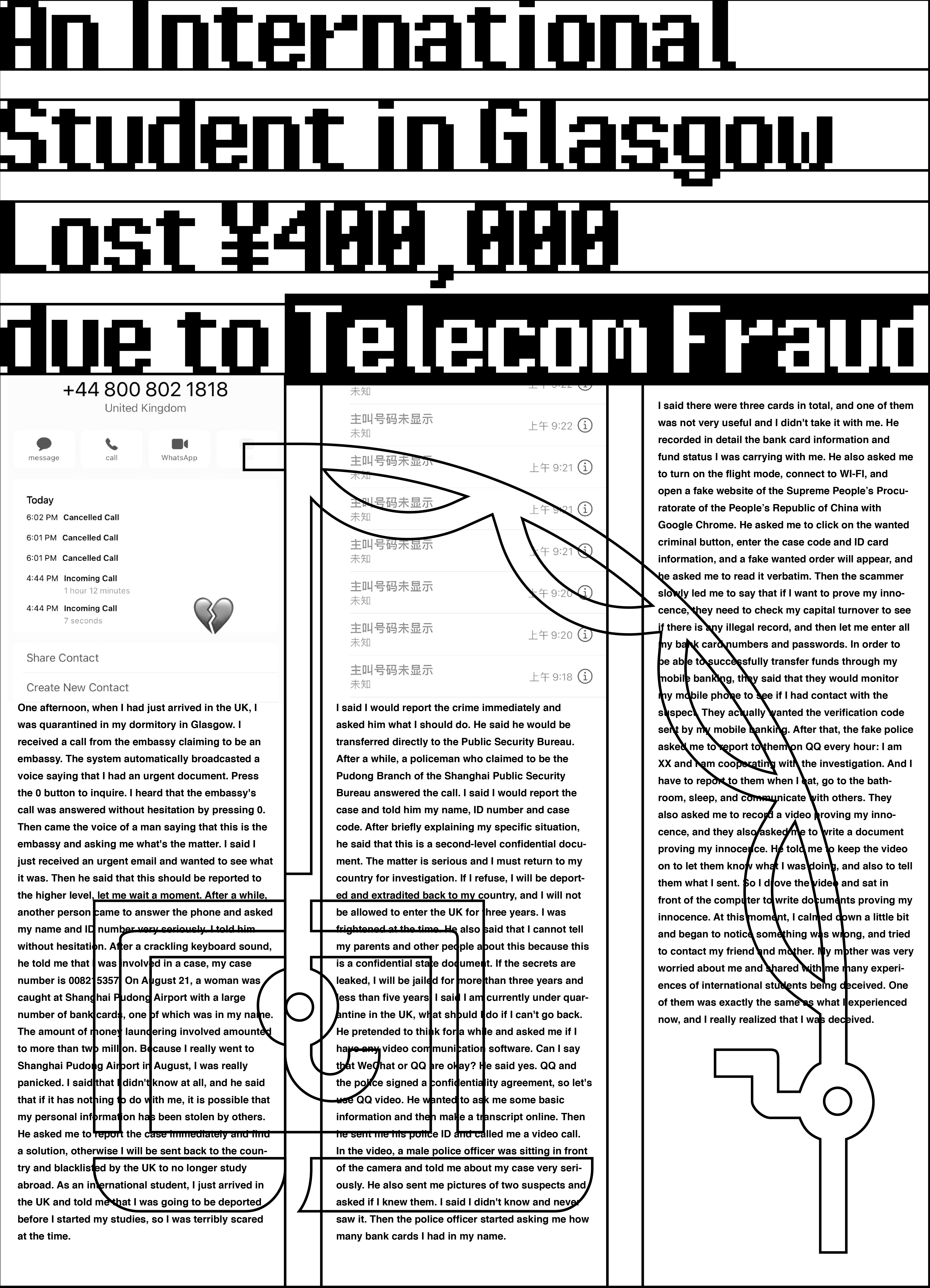

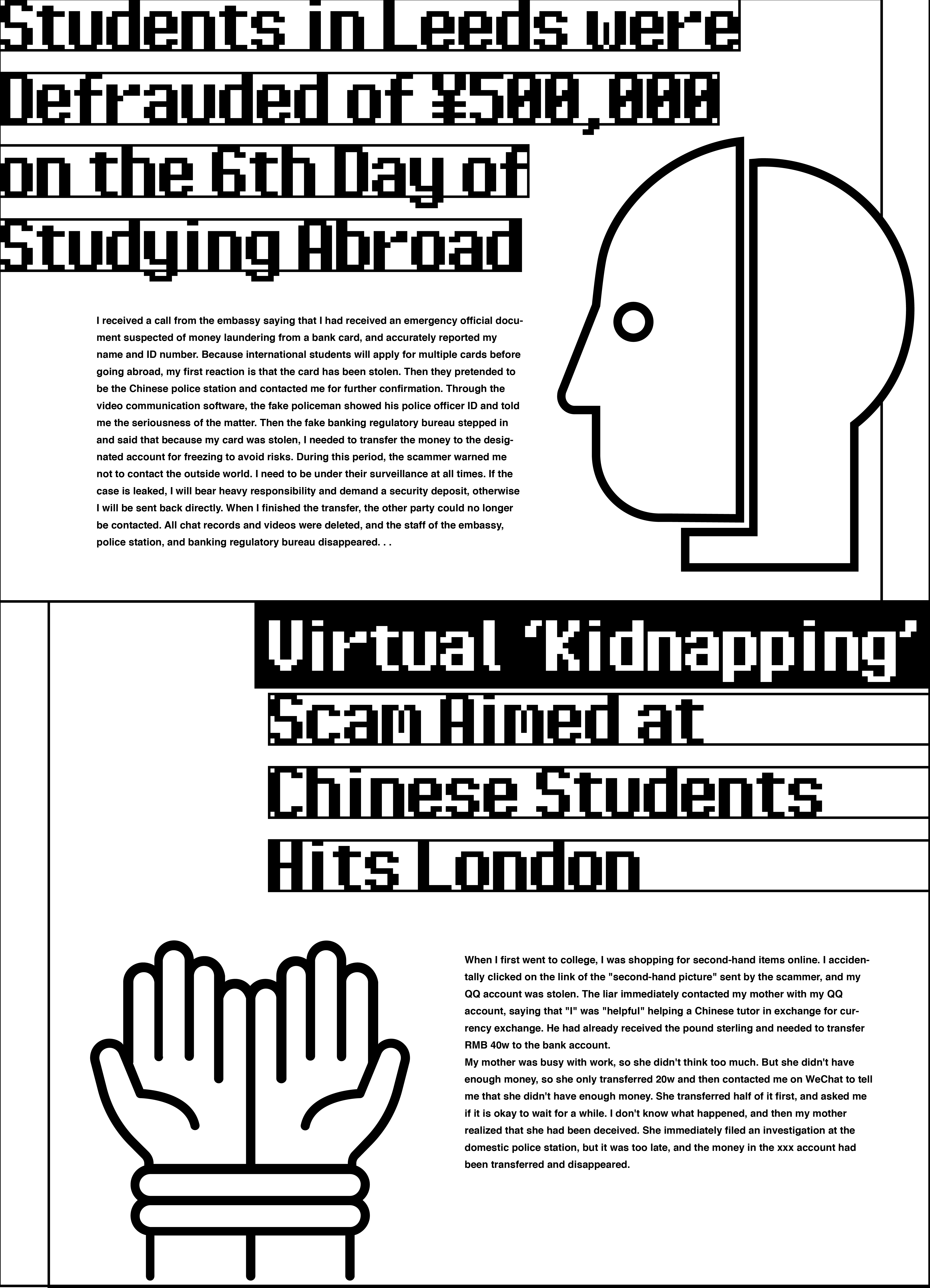
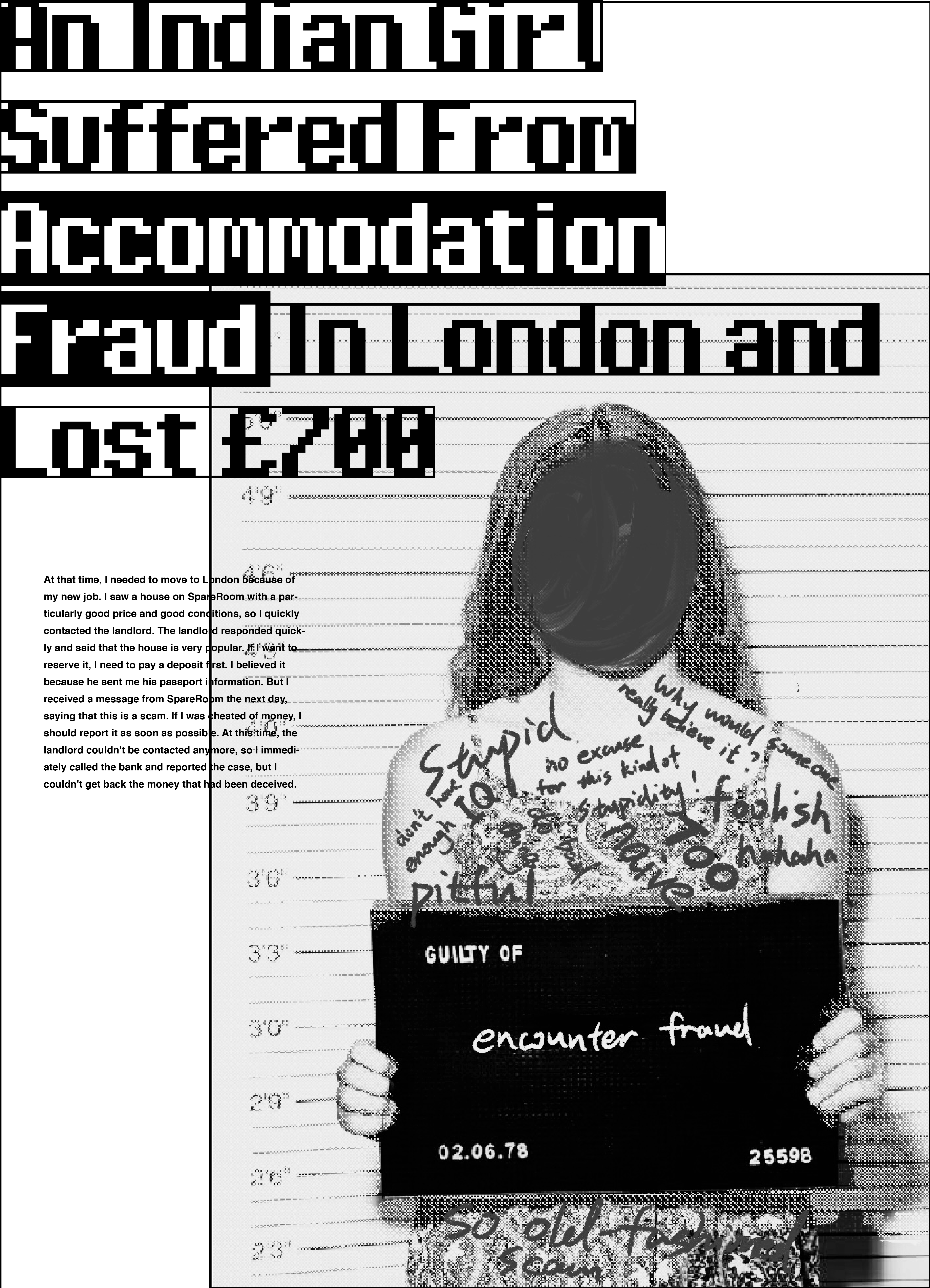
6 – Printed Work

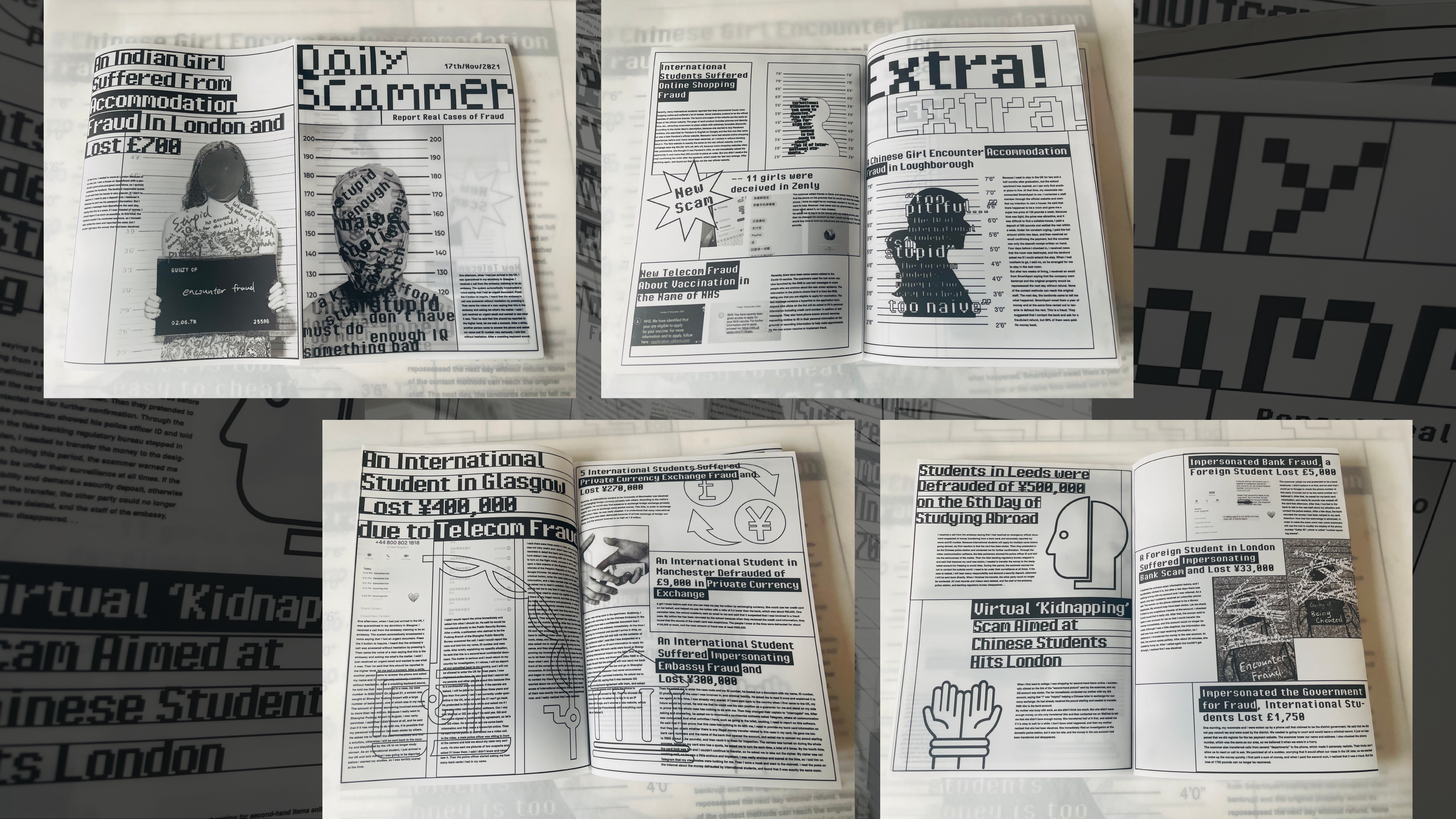
7 – Final


9. concept animation – Scammer academy
1 – Paper Prototype and Concept Expression
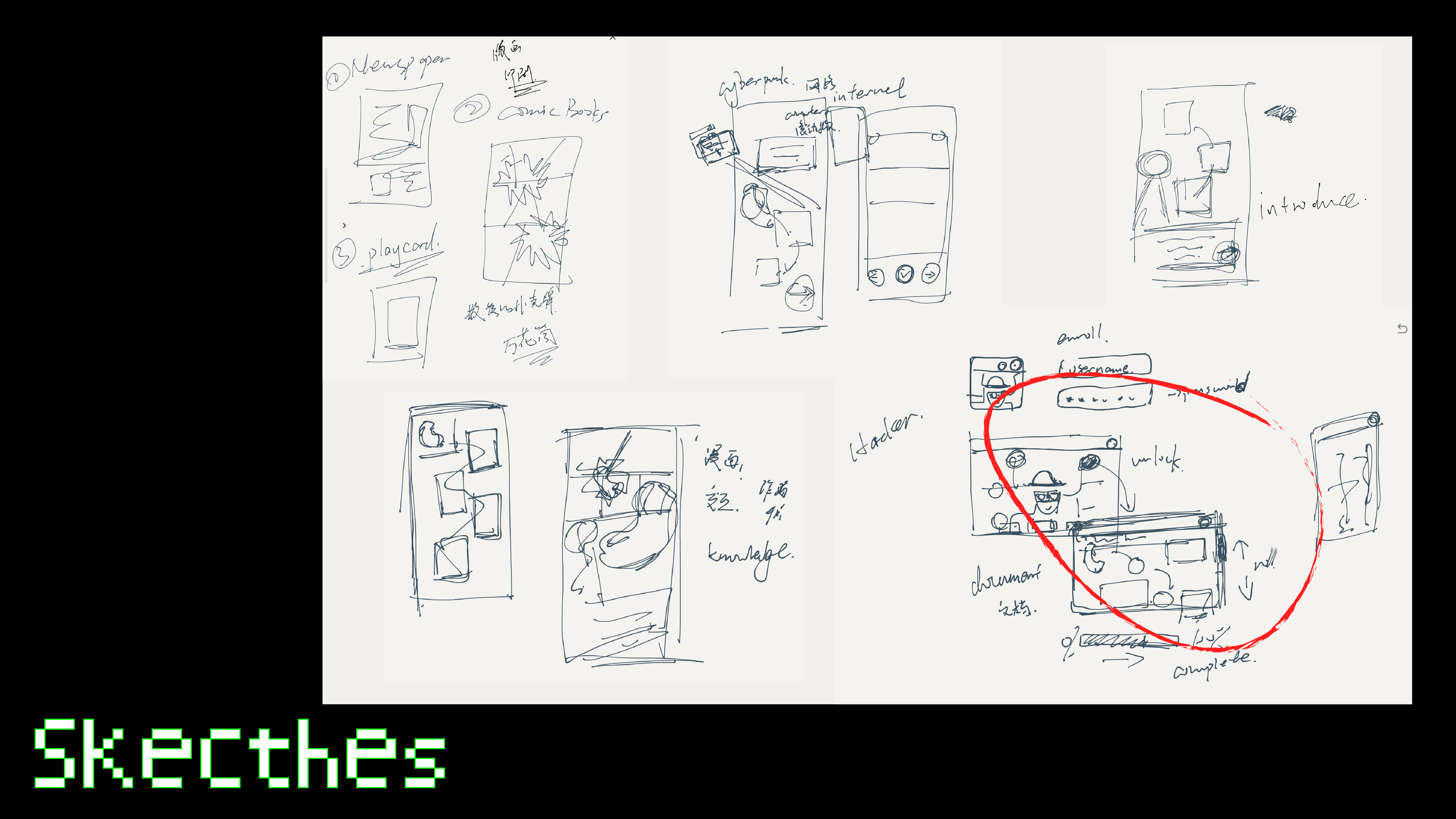
I draw some sketches and made a paper prototype to show the concept of Scammer Academy. After enrollment, the user can choose a scam to learn. The difficulty of learning each scam is also different, only by learning simple scams can users unlock new and more difficult scams. Each scam display steps and precautions in the form of comic books. And each step will be displayed in turn when the user scrolls the interface. The progress bar below which is linked to the mode also shows the user’s progress in becoming a scammer.
2 – Content
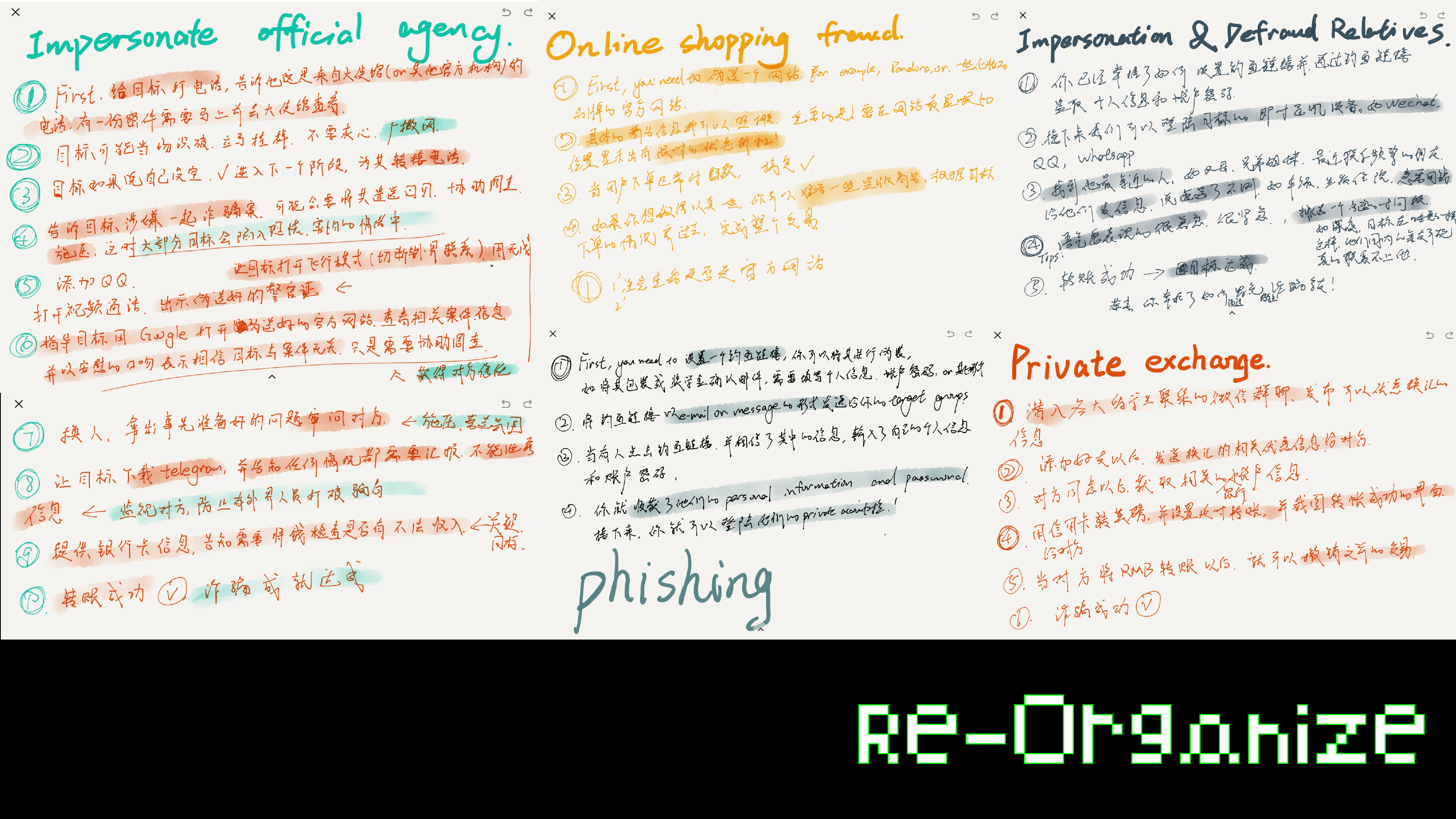
I choose the five most typical scams encountered by international students and rearrange the steps of these scams from another perspective.
3 – Sketches
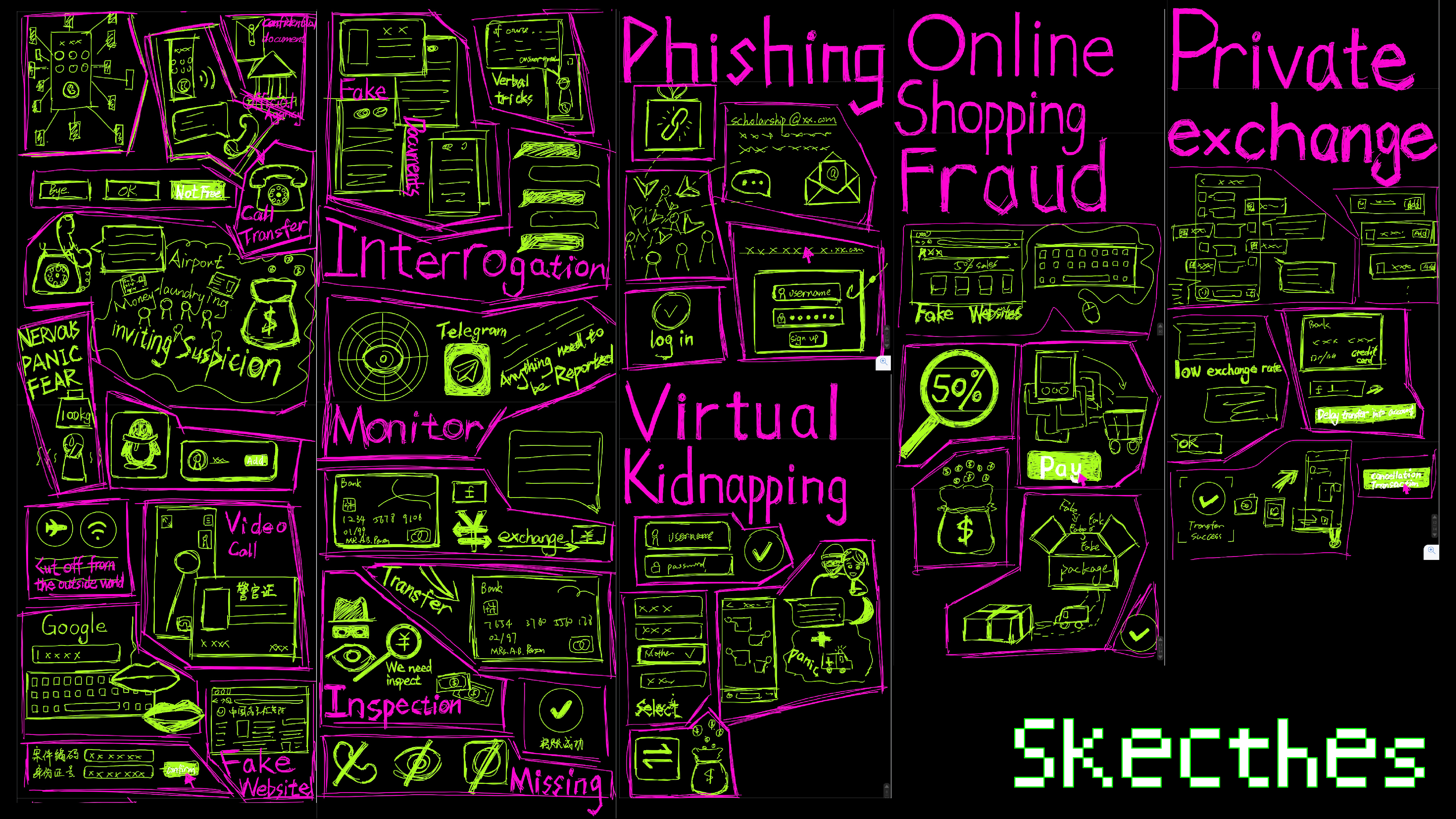
Visualize these scams according to the re-organized text.
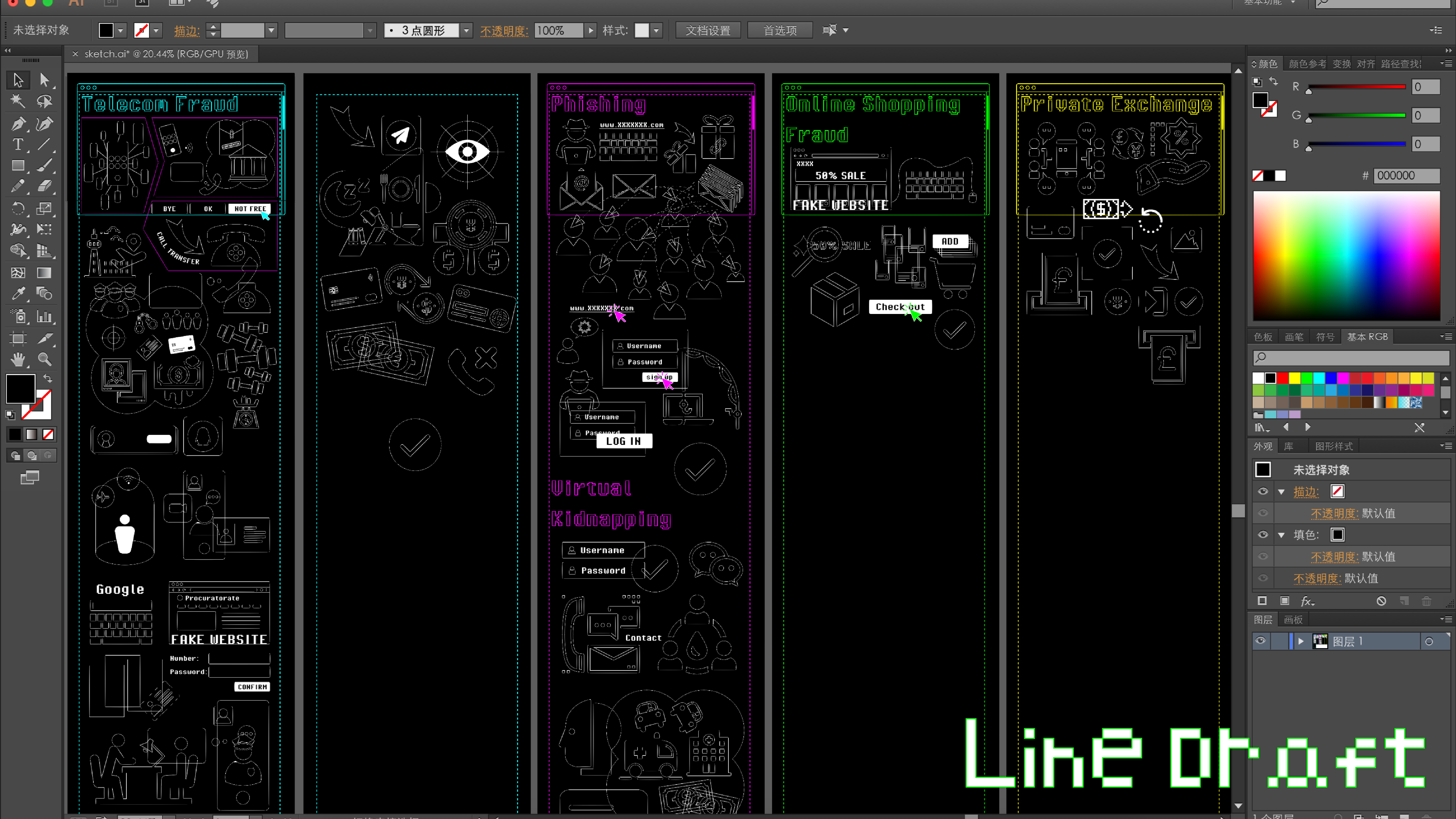
4 – Moodboard and Color
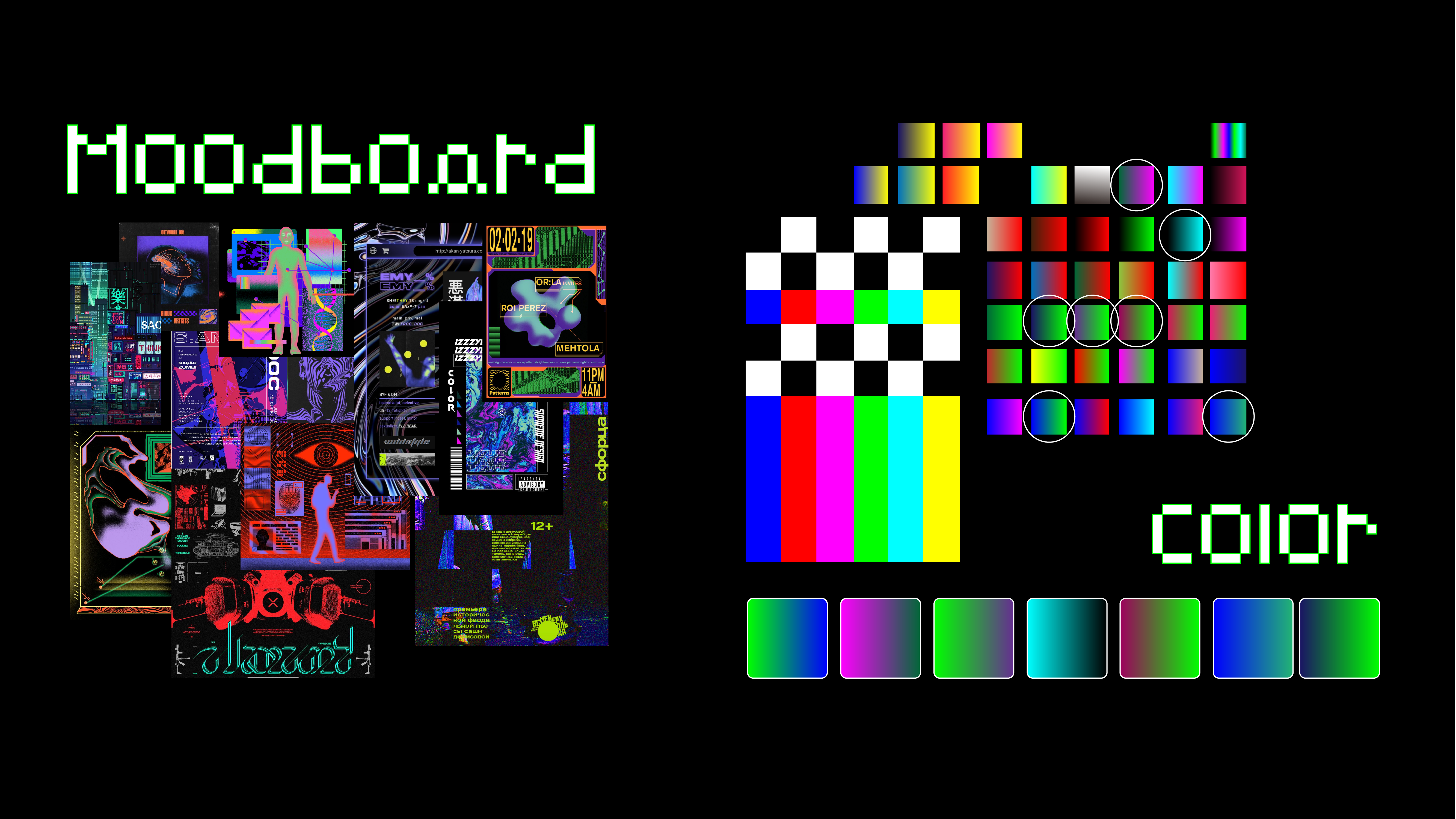
5 – Illustration
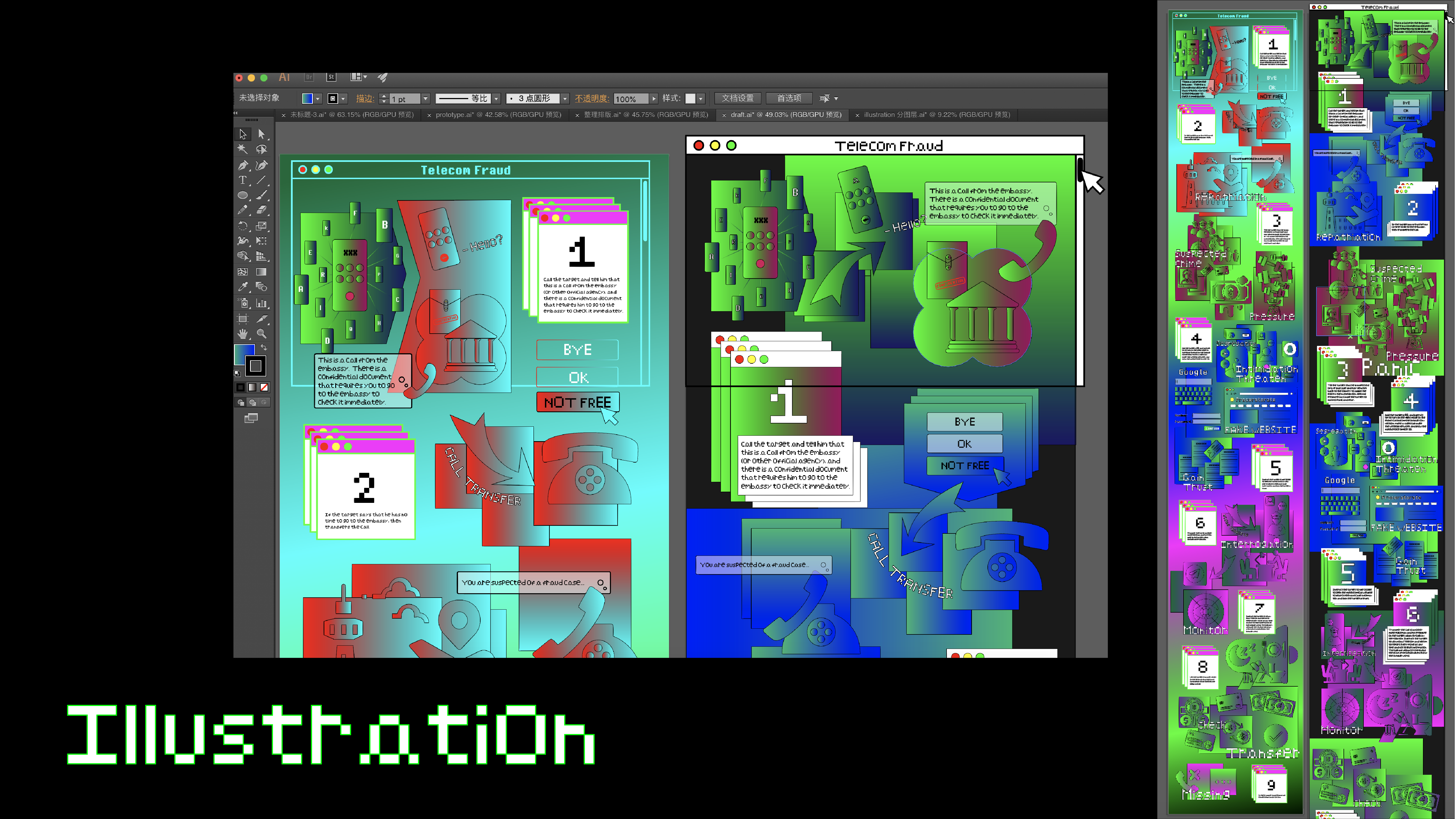
6 – Animation
7 – Some details
